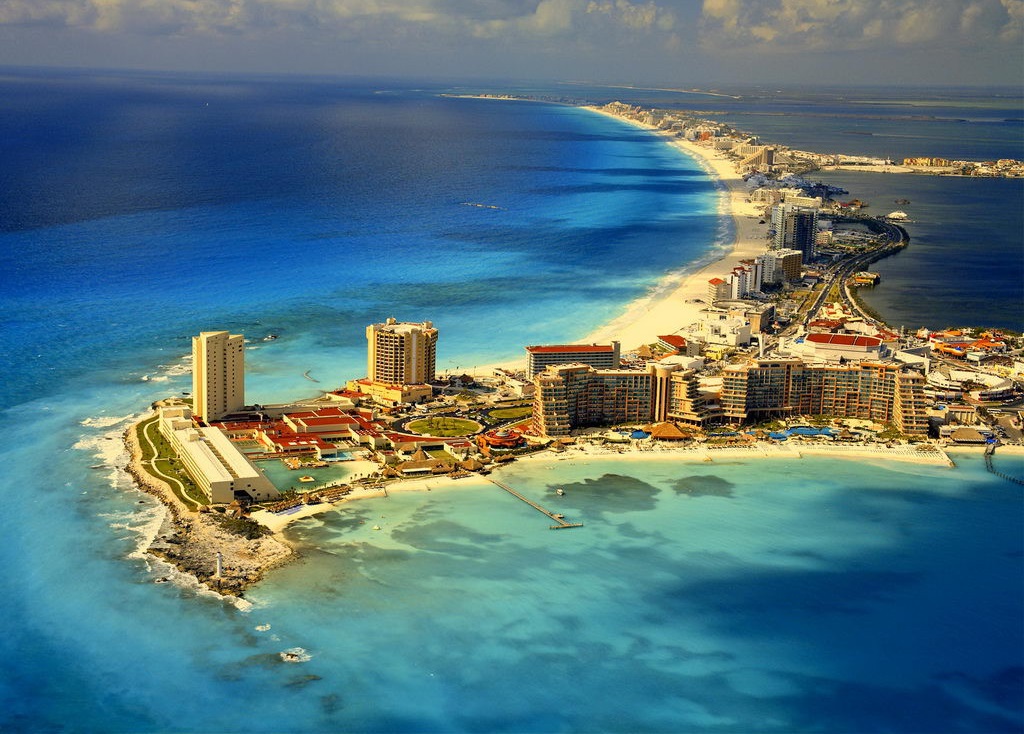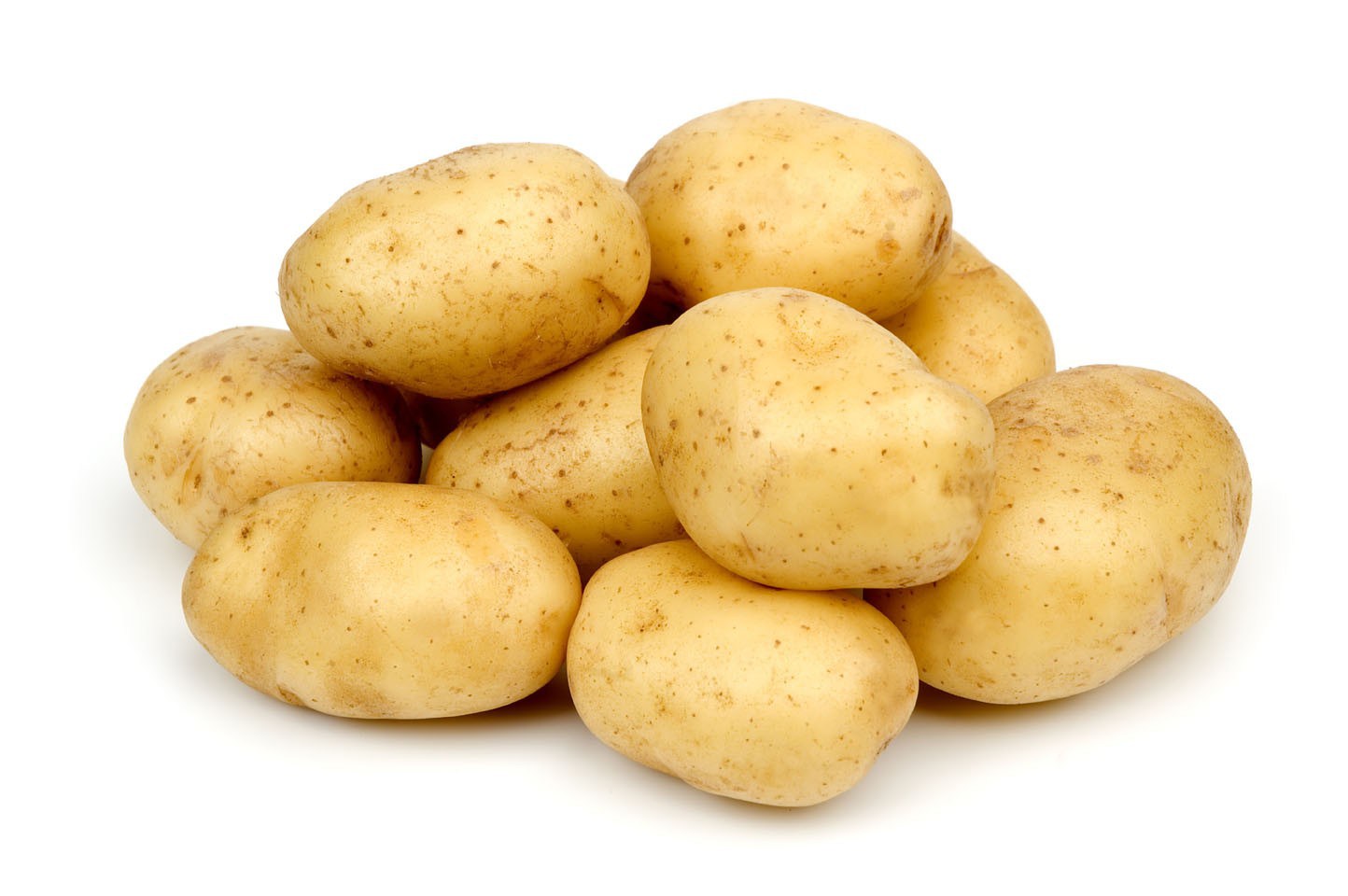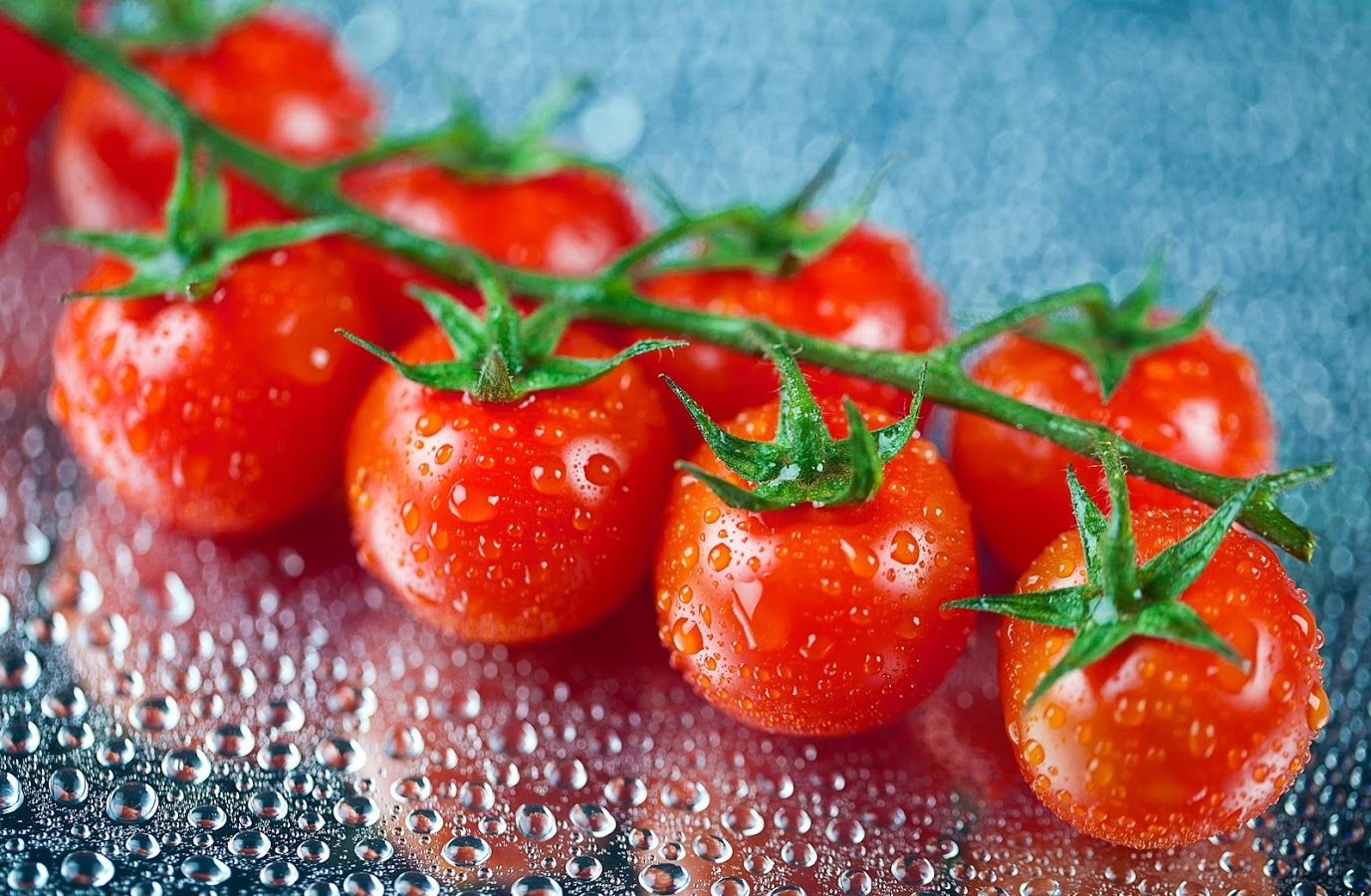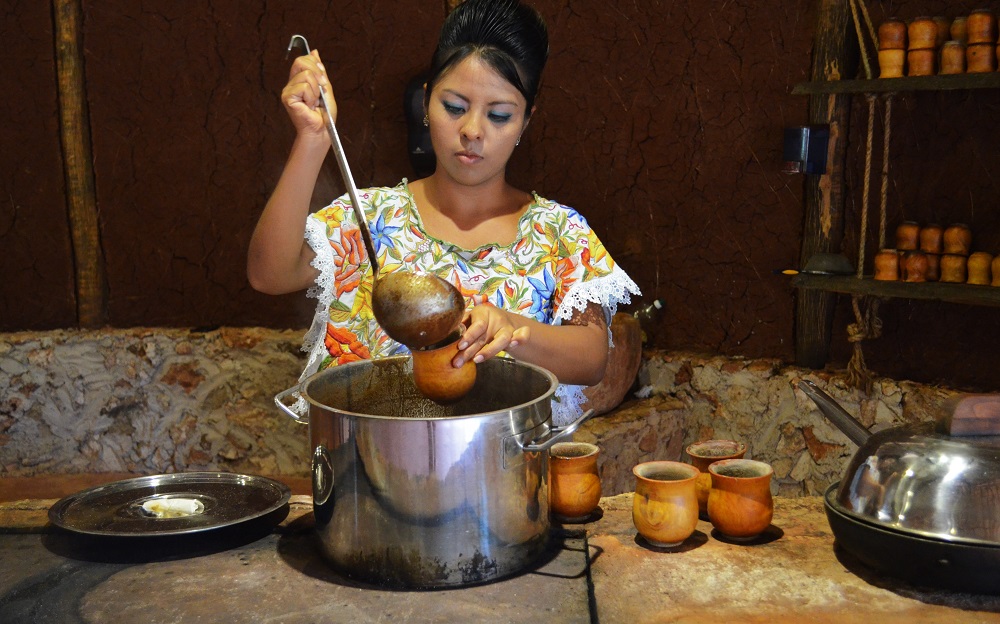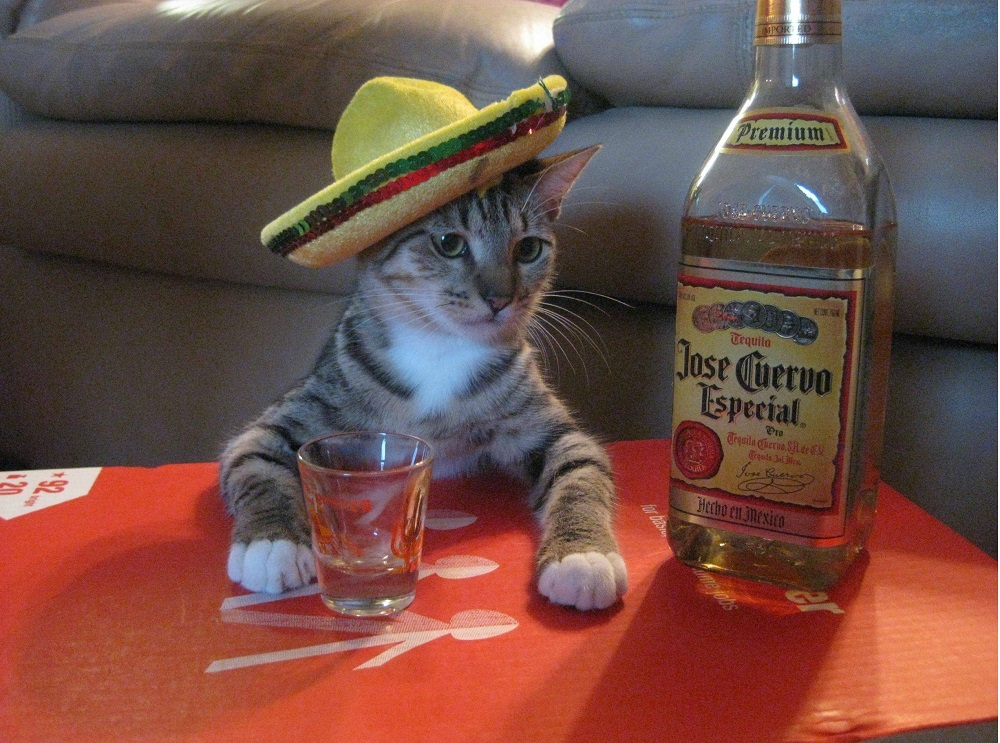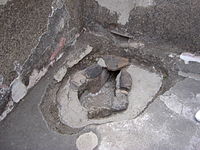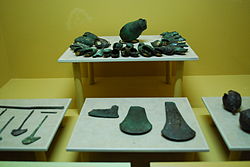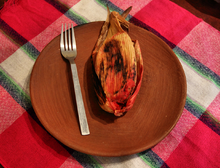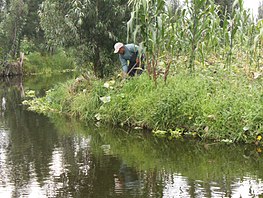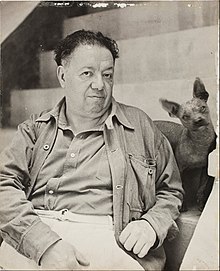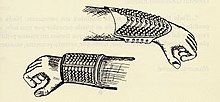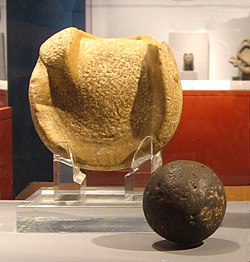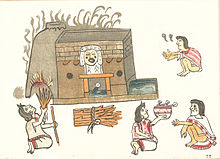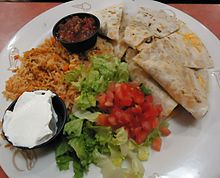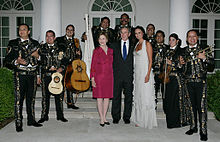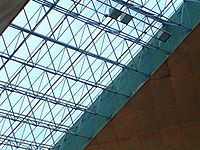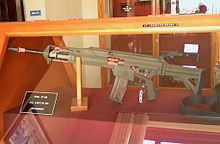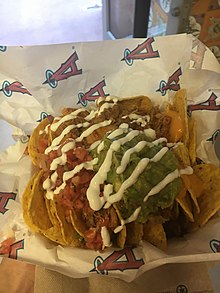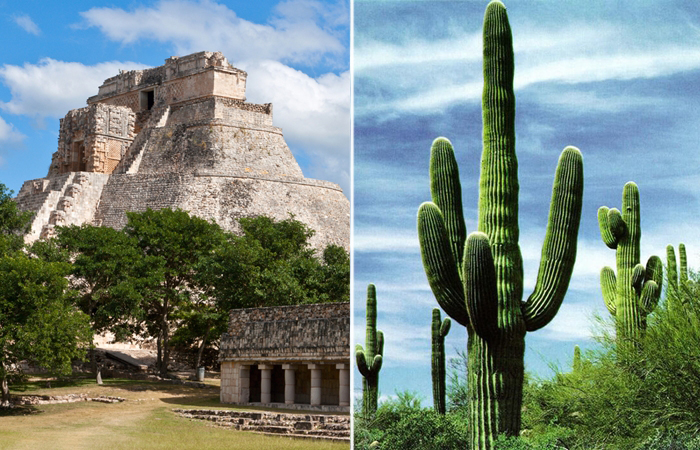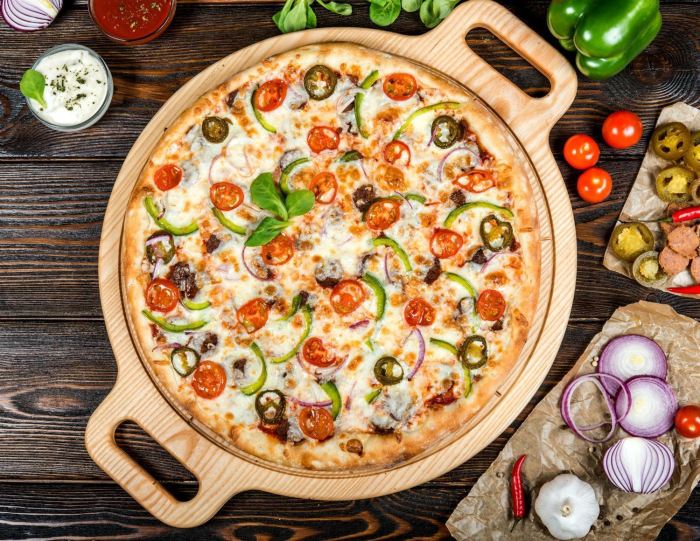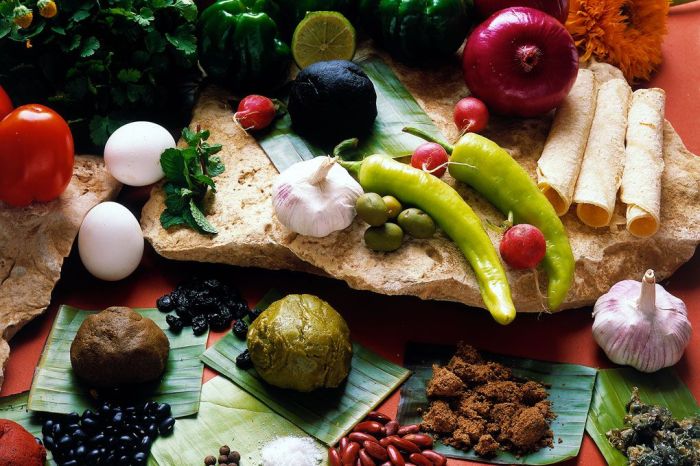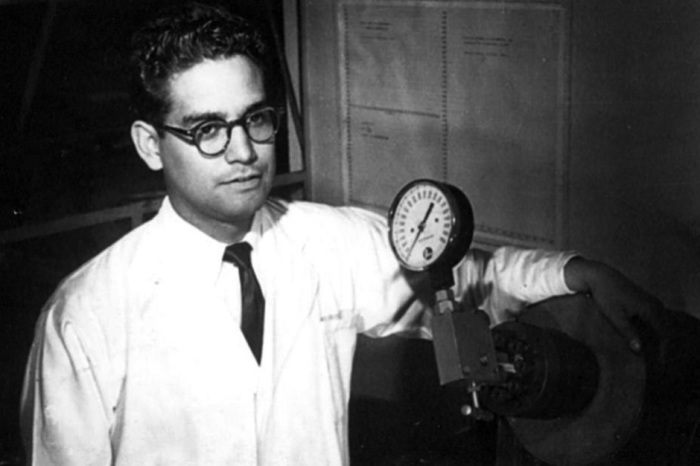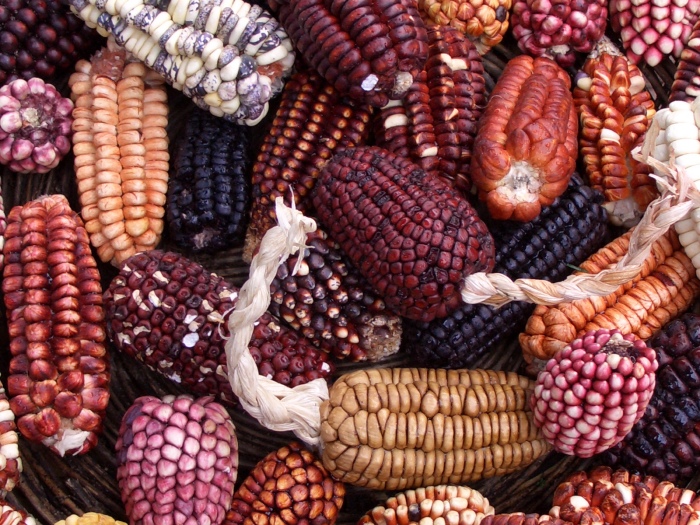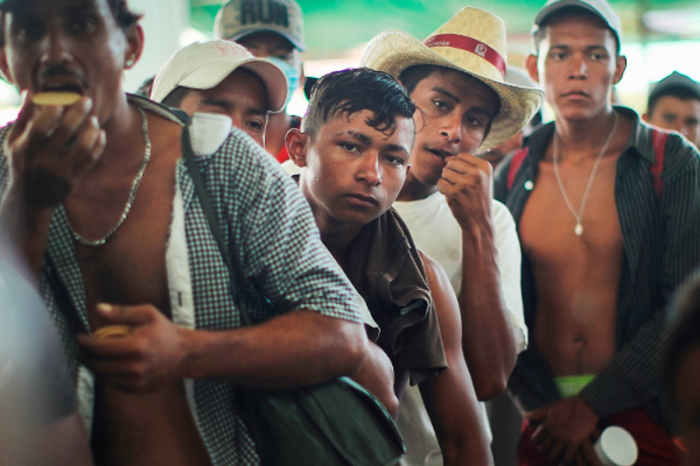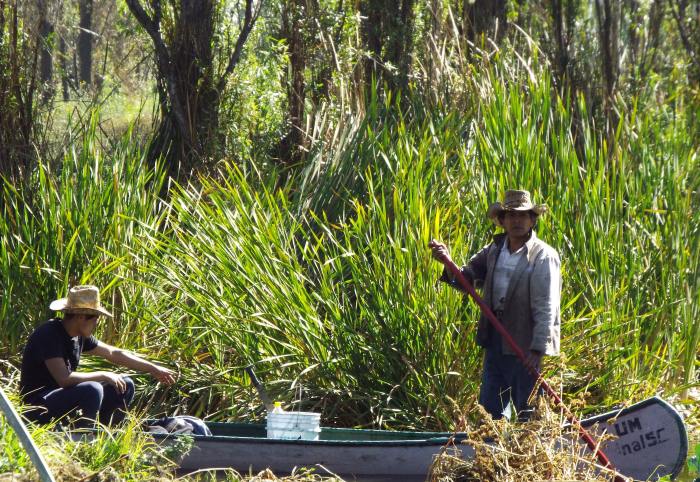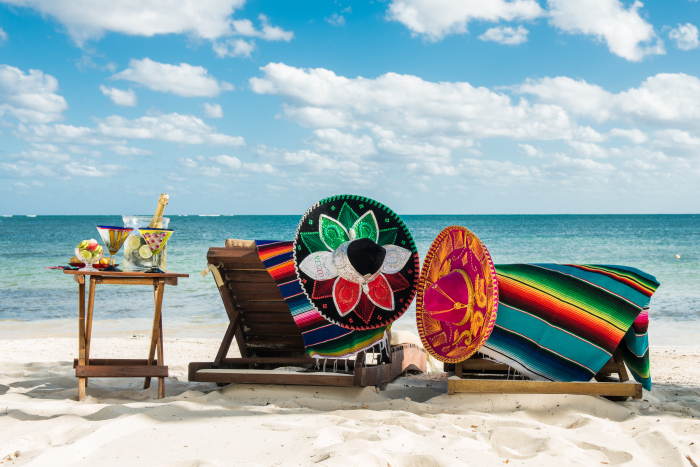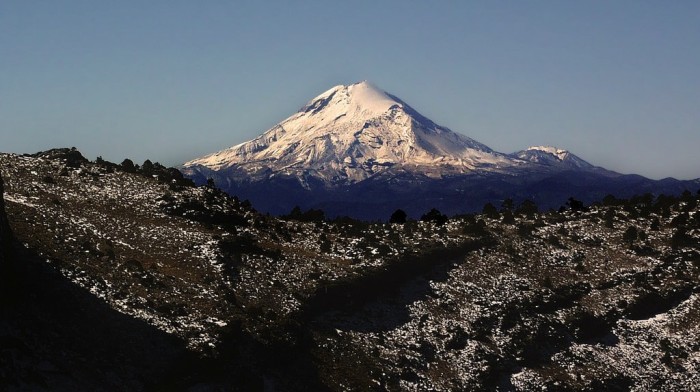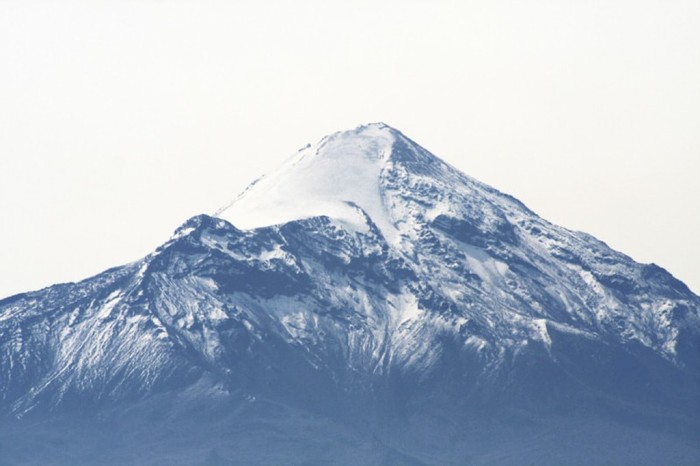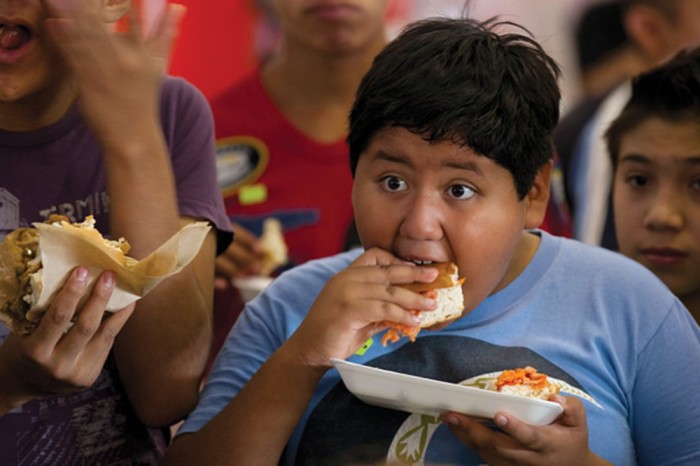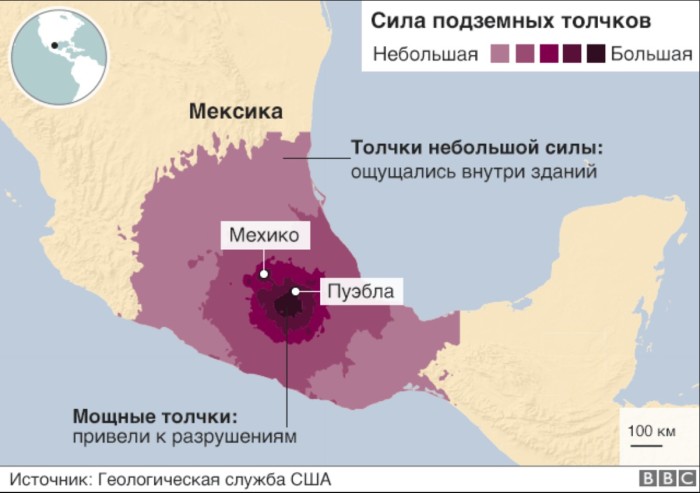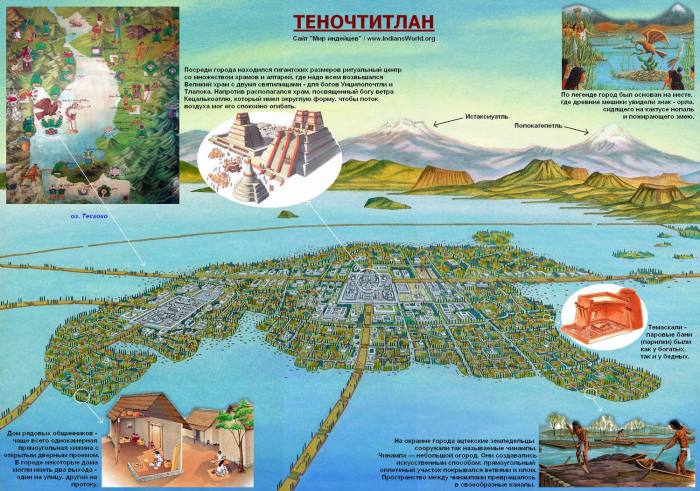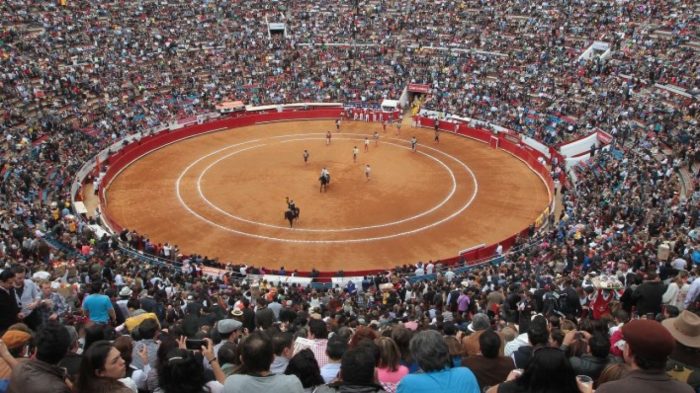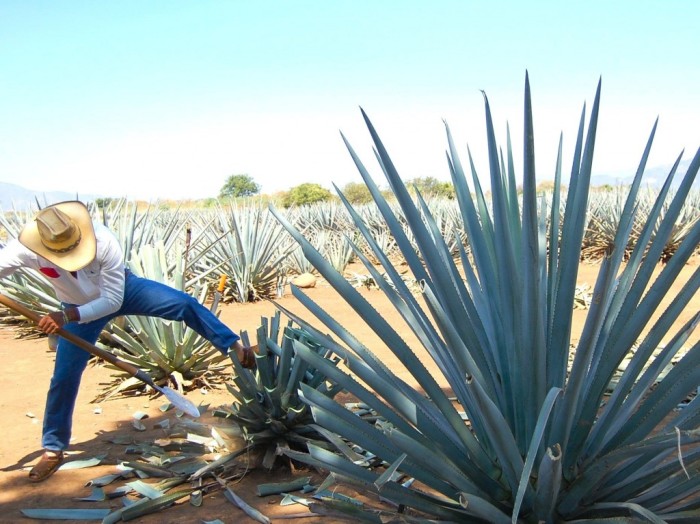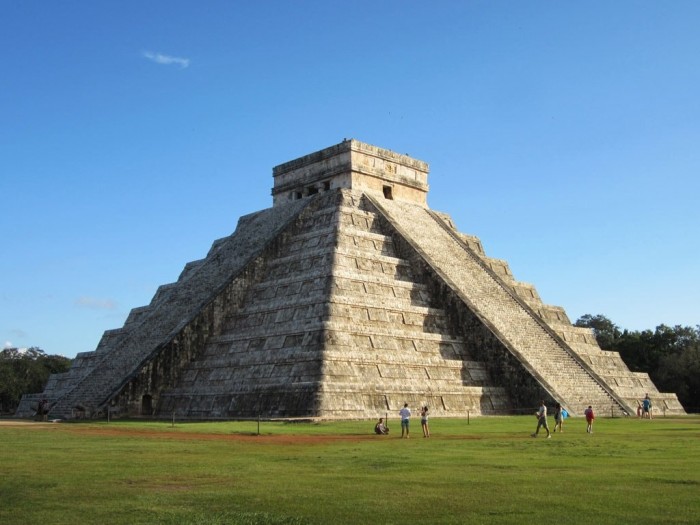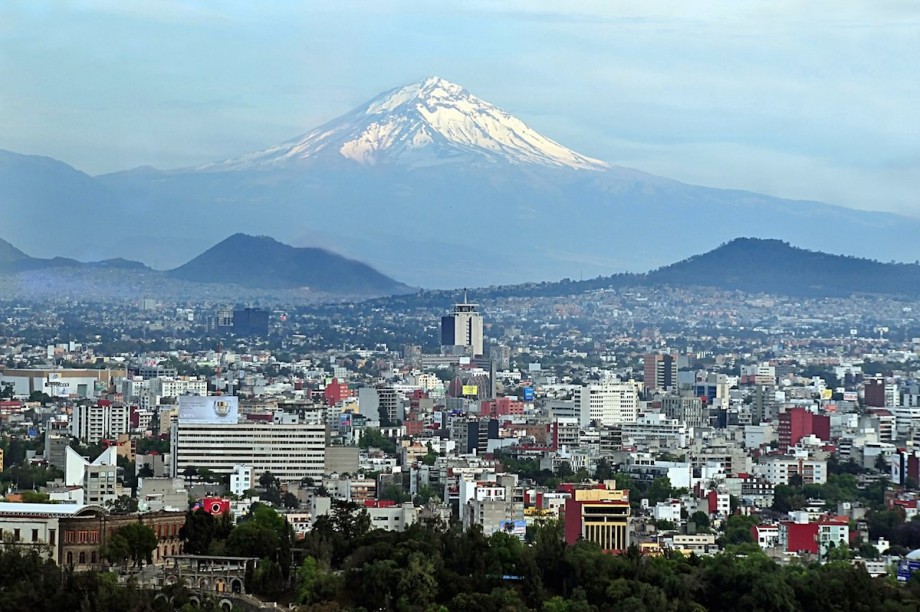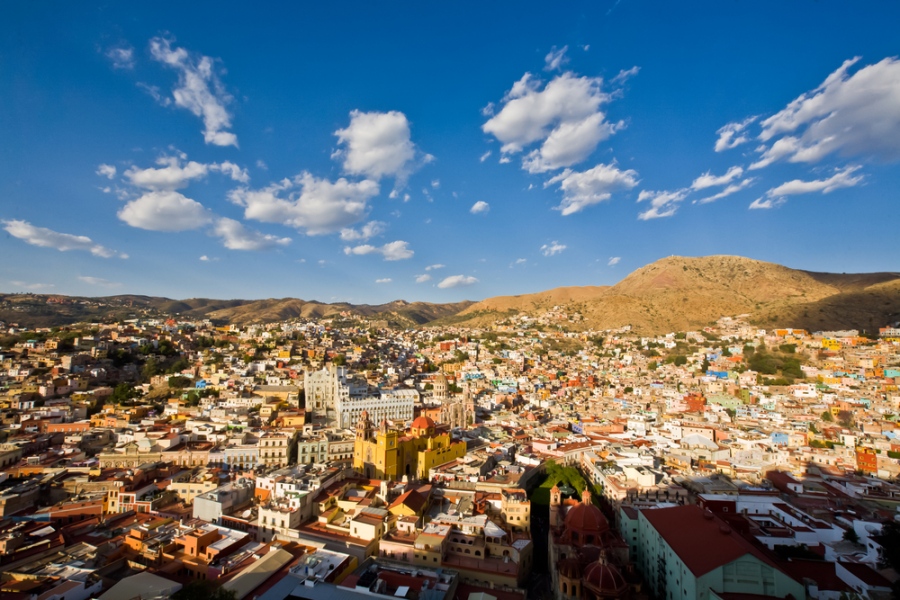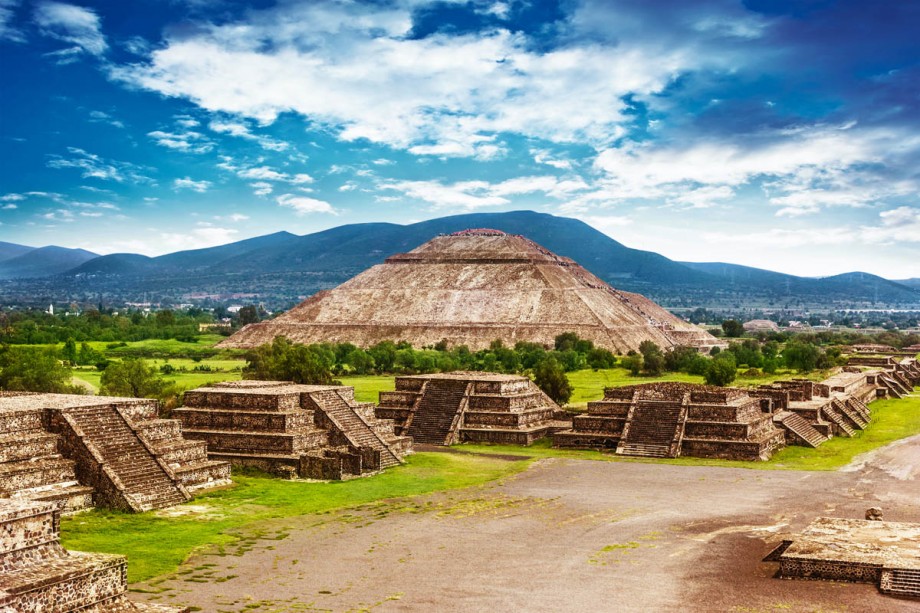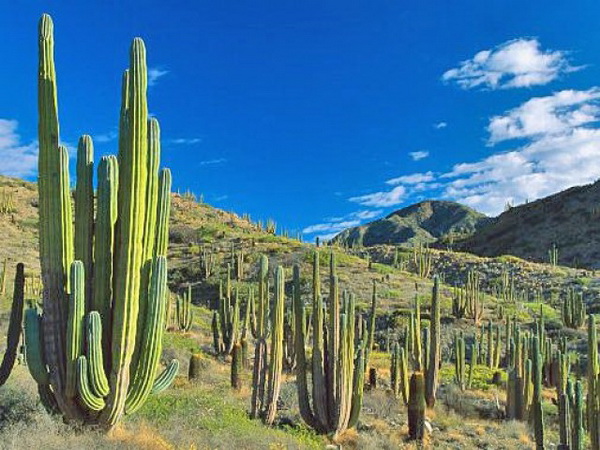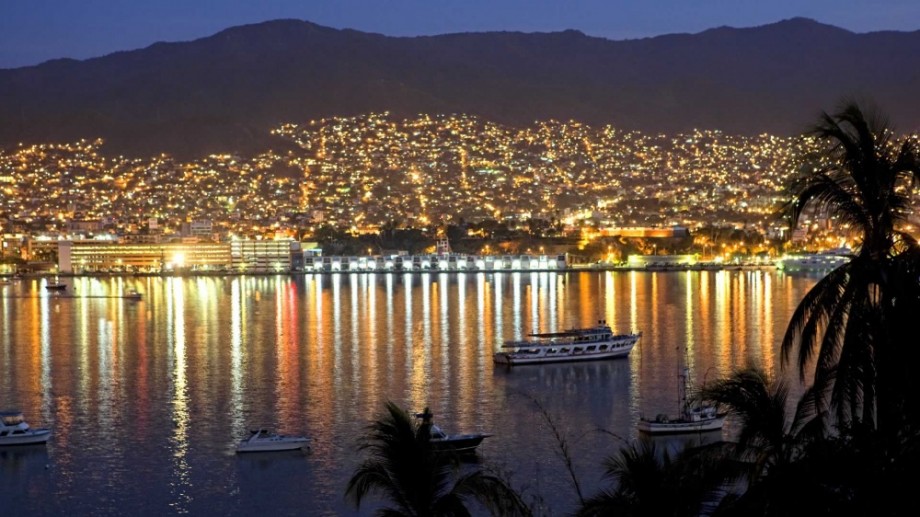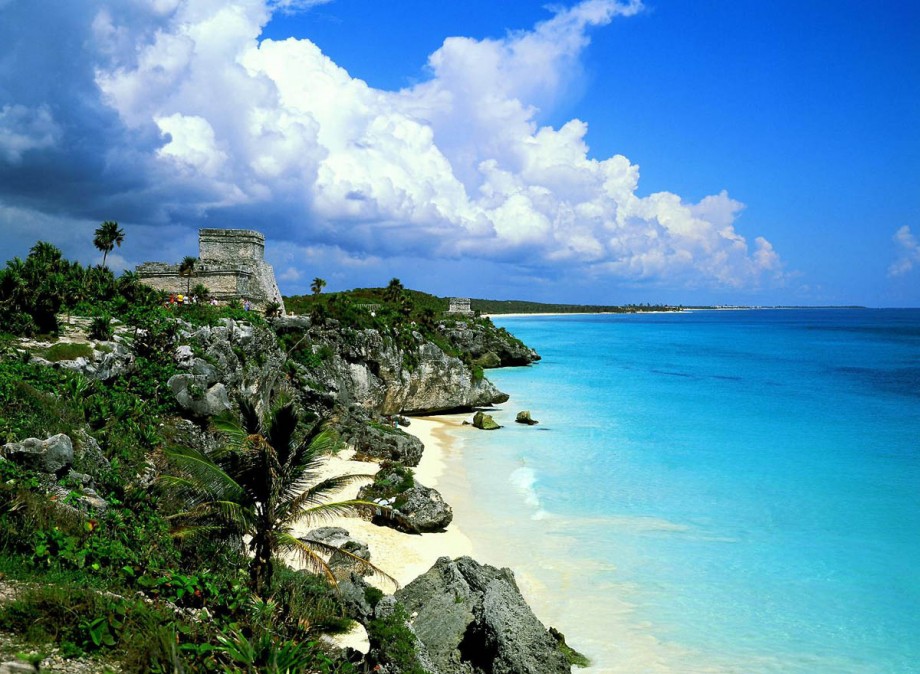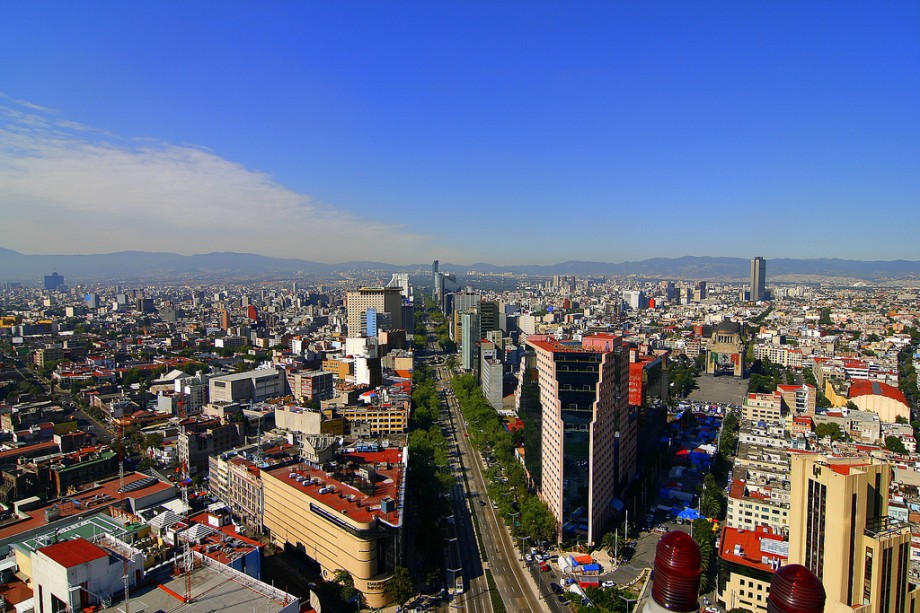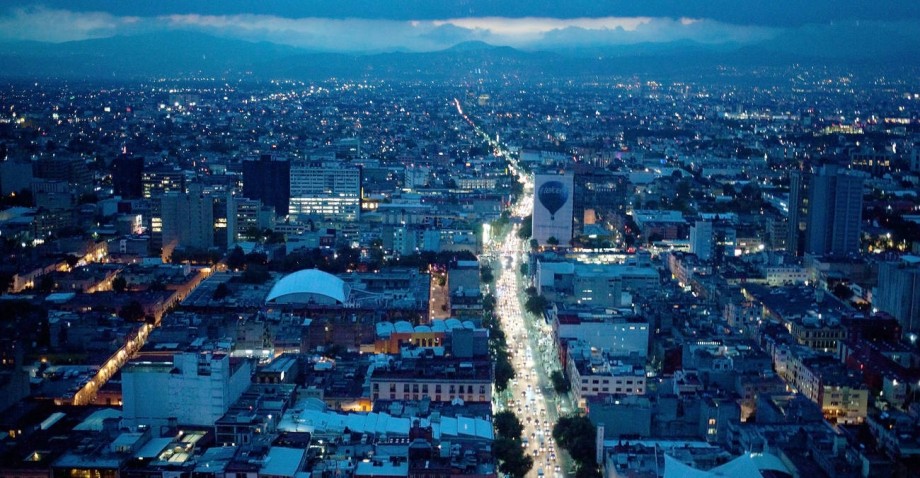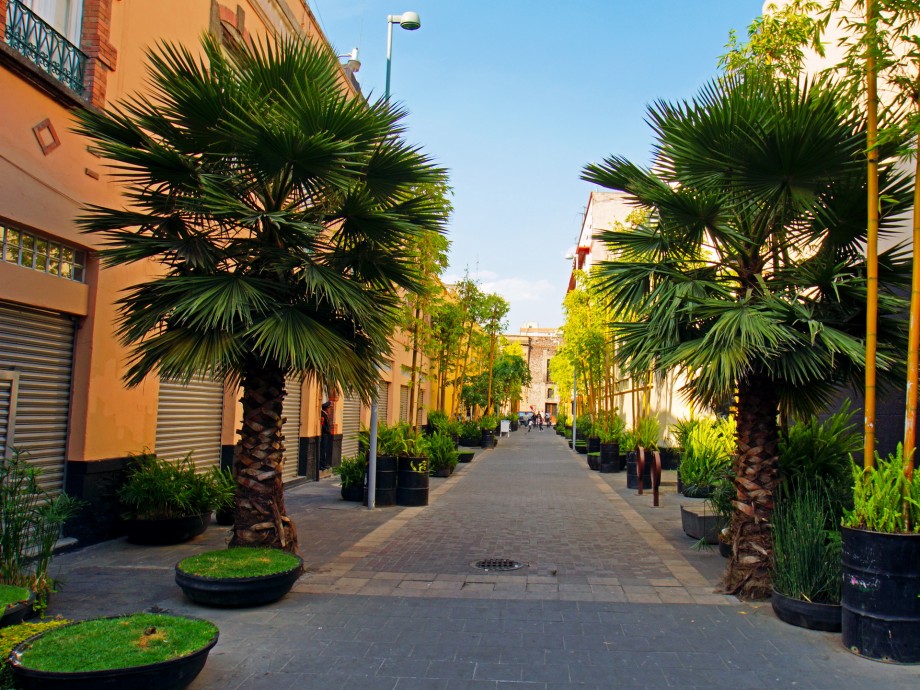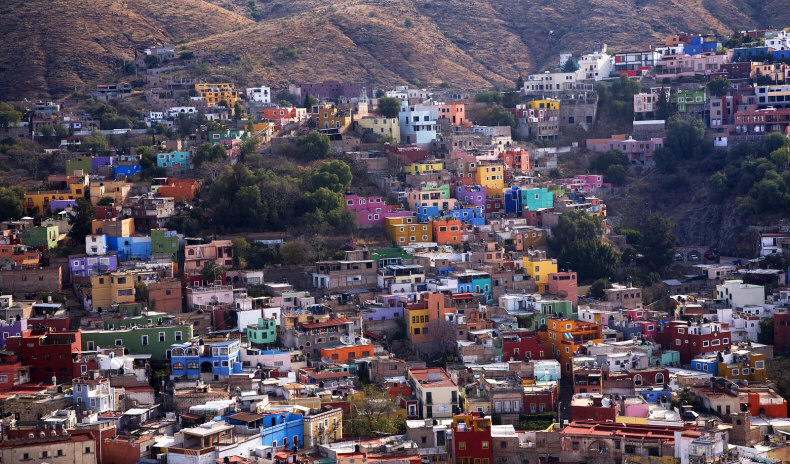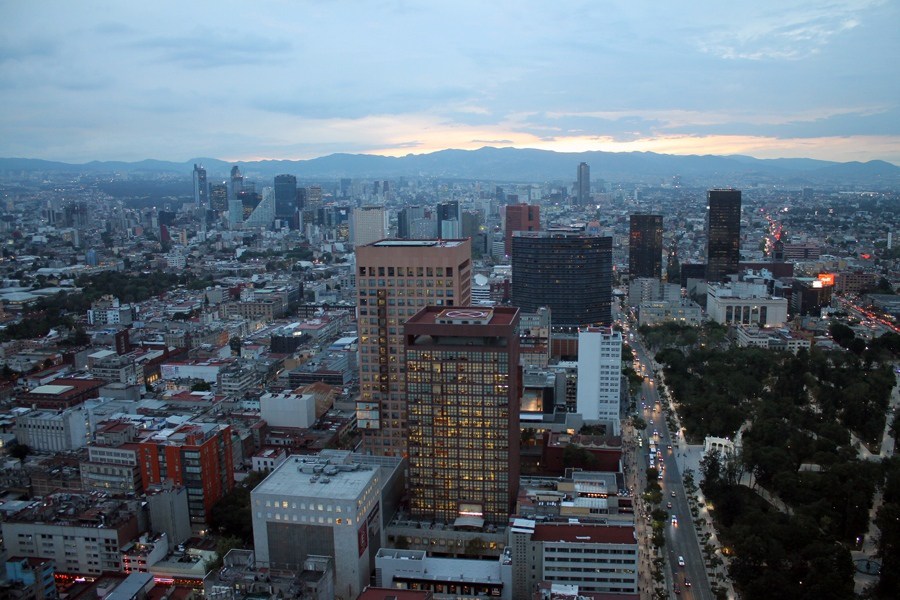Что подарила миру Мексика
1368
Как вы, наверное, знаете, многие привычные теперь продукты пришли к нам с американского континента, после его колонизации в 16 веке. Если быть точнее, эти продукты подарила миру Мексика. Что же это за продукты?
Во-первых, это картофель. Да, корнеплод для самого популярного в мире гарнира – картошки-пюре – по происхождению мексиканец. Это же можно сказать и о царице советских полей, излюбленной культуре Никиты Хрущева, да и простого населения – кукурузе. Этот злак попал к нам с первыми экспедициями, вернувшимися с берегов Мексики.
Еще один полюбившийся нам испанец – помидор. Сейчас сложно представить полноценный рацион без томата, а когда-то о нем даже не слышали. Кстати, вопреки расхожему стереотипу, помидор – это не овощ, а фрукт, точнее ягода.
Родом из Испании и самый популярный во всем мире десерт – шоколад. Древние ацтеки, жившие на территории теперешней Испании, готовили напиток под названием «чоколатль», что в переводе означает «горькая вода». Для этого они смешивали измельченные жареные бобы какао с водой и перцем. Полученную смесь употребляли для бодрости и пили холодной.
Интересно, что по некоторым версиям из Мексики происходит и популярная у молодежи жевательная резинка. Оказывается, это древнее изобретение, которым пользовались еще племена Майа. Они жевали природный каучук, получаемый из сока гевеи.
Помимо продуктов, которые теперь нам кажутся родными и привычными, стоит отметить и чисто мексиканские продукты, котрые становятся все белее популярными по весму миру. К таковым можно отнести такие закуски, как буррито и тако. Из специй отметим перец чили и сальсу. Ну а из напитков – несомненно, водку из листьев агавы, текилу.
From Wikipedia, the free encyclopedia
Mexican inventions and discoveries are objects, processes or techniques invented or discovered, partially or entirely, by a person from Mexico. These also include concepts or practices introduced by Mexican people and their indigenous ancestors. Some of the objects, processes or techniques developed in the Pre-Columbian era were also invented or discovered independently in other cultures. This list shows only inventions and discoveries first introduced in present-day Mexican territory, or those that vary significantly in concept, figure, or use.
Pre-Hispanic[edit]
Musical instruments[edit]
A drawing from the 16th century Florentine Codex showing a One Flower ceremony with a teponaztli (foreground) and a huehuetl (background).
- Tlapitzalli
- Ocarina
- Teponaztli
- Huehuetl
- Hom
- Carimba
Art[edit]
Wall painting in Teotihuacan.
- Painting – Classic period Maya paintings, found in the archaeological sites of Cacaxtla and Bonampak, are some of the most refined paintings ever to come out of the ancient Americas. Besides the Maya, other indigenous civilizations were also known for their wall paintings, including the Aztec, who developed the art of sand painting.
- Pottery – many indigenous American cultures and peoples independently invented and then refined pottery in the Americas into fine works of art, as well for utilitarian usage. The Moche and Maya were some of the best potters from the ancient Americas, and their work still inspires awe amongst us for the level of artistry, creativity, and sophistication, which such highly prized works of arts involved. Many other indigenous American cultures also developed their own pottery styles during the pre-Columbian time periods and continued to refine their artwork into the modern era.
Calendrics[edit]
- Xiuhpōhualli:One of several calendars used by the Aztec, it consisted of 365 days and held great importance for religious rituals and agricultural practices.
- Mesoamerican calendars
- Almanacs – Almanacs were invented independently by the Maya peoples. Their culture arose, and presumably began using almanacs, around 3,500 years ago, while Europeans are known to have created written almanacs only after 1150 CE. Almanacs are books containing meteorological and astronomical information, which the Maya used in various aspects of their life.[1]
Engineering[edit]
- Aqueducts:The Aztecs constructed complex, dual-pipe aqueducts to supply their vast city of Tenochtitlan.
- Canals:the Aztecs constructed great canals used for transporting food, cargo, and relaying people to the chinampas (floating gardens used for growing food) in their great metropolis of Tenochtitlan.[2]
- Causeway:the Aztec built many giant causeways that connected the mainland to their capital city of Tenochtitlan, located in the heart of the Aztec Empire. The causeways served as arteries used for transporting food, goods, people, captive warriors, and wastes during the heyday of the Aztec Empire in the 14th century to the 16th century.[3]
- Dams – the Aztec in Tenochtitlan constructed great dams during the heyday of the Aztec Empire. Tenochtitlan, the capital of the Aztec empire, was first built on a small island that was located in the western section of Lake Texcoco in 1325 CE. The Aztec created various large artificial islands around the small island using a system that was similar to building the chinampas (floating gardens in the lake that was used to grow food for the cities’ population). To provide drinking water to the cities’ population of over a quarter of a million inhabitants, the Aztec built a system of dams that separated the salty waters of the lake from the rainwater that was accumulated during periods of heavy rains. The Aztec also used the dam to control the level of water in the lake and prevent their city from being flooded during times of heavy rains. To prevent flooding, the Aztec constructed an inner system of channels that helped to control the water level and held the level steady during flooding and periods of intense rains. Hernán Cortés, and the other Spanish conquistadors, destroyed these engineering marvels that the Aztec had developed during the previous 200 years.[4]
- Palaces:indigenous American civilizations such as the Olmecs, Mayans, Zapotecs, Aztecs, Mixtecs, Moche, Toltecs, Inca, Chimú, Nazca and many more built elaborate palaces. The Mayan palace in Palenque is one of the best examples of Mayan palace architecture.
- Pyramids:advanced civilizations in Mexico, such as the Toltecs, Olmecs, Zapotecs, Aztecs, Mayans, Mixtecs, developed their own myriad styles of pyramids, usually step pyramid, which served for ceremonial/religious and administrative functions. In Mesoamerica, the largest pyramid in the world—The Great Pyramid of Cholula—began to be constructed by the inhabitants of Cholula in the 3rd century BCE. In the Andean regions, the Moches, and some ancient Peruvians also constructed gigantic pyramids as well without any influence from Old World civilizations.
- Planned city construction:Ancient cities in Mexico–such as Teotihuacan and the Aztec capital of Tenochtitlan–incorporated planned city design, including streets laid out in a grid pattern.
- Plumbing:The Maya have been found to be the earliest inventors of plumbing in Mesoamerica, with the earliest example of a pressurized water system being constructed in 750 CE—or earlier. This pressurized water system was located in the Maya site of Palenque, where public baths and toilets were accessible to the residents of the ancient city.[5]
- Wheel and axle:Mesoamericans invented wheels but only used these as toys. The oldest wheeled figure to have been uncovered in Mesoamerica is a crowned, dog-like figure in Tres Zapotes, Veracruz, dated ca. 100–200 CE. The most common examples of the Mesoamerican wheel and axle are Aztec clay wheeled toys.[6]
The Palace Observation Tower at Palenque.
- Observatories:Mesoamerican astronomers constructed towers to observe the movements of the planets and other astronomical features and events. Although culture groups throughout the world have observed the planets and stars and recorded their movements, the stone structures of the Mesoamerican and Andean culture groups are significant because they show the emphasis these early astronomers placed on making clear and accurate observations. The most notable example of Maya astronomical observatories is Caracol, in Chichén Itzá. In 1975, archaeoastronomers Anthony F. Aveni and Horst Hartung surveyed the site and suggested that ancient Maya astronomers used the structure to observe the planet Venus. The Maya, as well as other Mesoamerican culture groups, used Venus to set times for ceremonies and as a divination tool.[7]
Metal production[edit]
Copper bells, axe heads and ornaments from various parts of Chiapas (1200–1500) on display at the Regional Museum in Tuxtla Gutierrez, Chiapas.
- Metallurgy in pre-Columbian Mesoamerica:The emergence of metallurgy in pre-Columbian Mesoamerica occurred relatively late in the region’s history, with distinctive works of metal apparent in West Mexico by roughly AD 800, and perhaps as early as AD 600.[8] Metallurgical techniques likely diffused northward from regions in Central or South America via maritime trade routes; recipients of these metallurgical technologies apparently exploited a wide range of material, including alloys of copper-silver, copper-arsenic, copper-tin and copper-arsenic-tin.[9]
Games and entertainment[edit]
- Patolli
- Balloons: Invented by the Olmec.[10]
- Spinning top:Known from Mesoamerican times. A device used as a toy and made out of wood.[11]
Food preparation[edit]
- peanut butter
- Salsa
- Tomato sauce
- taco
- Pozole
- Burrito
- Atole
- tortillas
- tamales
- Nopales
- Chapulines
- Popcorn: First invented by the Zapotec and later introduced to Hernán Cortés by the Aztec[12]
- Guacamole: The name comes from an Aztec dialect via Nahuatl āhuacamolli [aːwakaˈmolːi], which literally translates to avocado puree.
- Chocolate: Believed to have been invented by the Olmec from cocoa beans, both the Mayan and the Aztec drank it hot, thus creating the hot chocolate.
Molcajete used to grind spices
- Molcajete
- Metate
- Comal
- Molinillo
- Tortilla press
- Petate
Crops and cultivation[edit]
- Chia seed
- Guava
- Rubus
- Sweet potato (possibly)
- Papaya
- Cocoa bean
- sunflower seed
- Squash
- Beans
- Pachyrhizus erosus
Native Oaxaca criollo avocados, the ancestral form of today’s domesticated varieties
- Avocado
- Chaya
- Chili pepper
- Potatoes
- Tomatoes
- Yuca
- Corn: First cultivated by the Olmec and Maya.
One of the remaining chinampas in Xochimilco
- Vanilla: the Totonac are believed to had been the first to extract vanilla from the pods of vanilla orchids and use it as a flavor enhancer.[13]
- Cotton
- Sisal production invented by the Maya.
- Tobacco
- Bottle gourds – the ancient Mexicans learned to first cultivate bottle gourds around 8,000 BCE. Indigenous peoples grew bottle gourds for use as bowls, scoops, colanders, ladles, spoons, canteens, and dippers. Larger gourds were used as cooking vessels.[14]
- Chinampa: Invented in central Mexico around 600 CE
Livestock[edit]
- Turkey (bird):Approximately 2,000 years ago, ancient Mesoamericans domesticated the turkey during the Late Preclassic period—from 300 BCE to 100 CE.[15]
Fashion[edit]
Page from the Codex Mendoza depicting warriors wearing Ichcahuipilli armor, and wielding fans and tepozli(spears).
- Huipil
- Umbrellas:independent of the ancient Chinese (who had also invented the umbrellas on their own), the Maya and the Inca had invented circular umbrellas, which were made from bird feathers.[16]
- Hand Fan:The Aztecs developed circular handheld fans made of feathers and other materials that served as a status symbol, and were used for warfare activities.
Dog breeds[edit]
- xochiocoyotl (coyote), xoloitzcuintli (known as xolo or Mexican hairless),
- chihuahua
Body armor[edit]
- Bulletproof vest:Ichcahuipilli, was a military armor used by various Mesoamerican cultures. It consisted of a layered cotton shirt, at least 2 inches thick, hardened with brine and other substances. It was originally intended to protect the wearer against projectiles and other weaponry, such as spears, arrows, and obsidian swords, but later was discovered to be capable of stopping musket shots.[17]
Dentistry[edit]
- Tooth transplantion: First practiced by the Maya.
Medication[edit]
- Antispasmodic medication, invented by the Aztecs.
- Ephedra:the Aztecs used ephedra in order to treat common colds. Unlike the Chinese version of the ephedra, the New World ephedra that was used by the indigenous Americans contained milder alkaloids.
- Antibiotics: The Aztecs developed antibiotic treatments by cultivating fungi on tortillas.
| Botanical name | Nahuatl name | Uses |
|---|---|---|
| Artemisia mexicana | Itztuahyatl | Weakness, colic, reduce fever; coughing |
| Bocconia frutescens | Cococxihuitl | Constipation, abscesses, swelling |
| Bromelia pinguin | Mexocotl | heat blisters in the mouth |
| Carica papaya | Chichihualxo-chitl | Latex unripe fruit for rash ulcer; ripe fruit digestive |
| Casimiroa edulis | Cochitzapotl | sedative |
| Cassia occidentalis or Cassia alata | Totoncaxihuitl | Astringent, purgative, anthelmintic, relieves fever, inflammation of rashes |
| Chenopodium graveolens | Epazotl | Against dysentery, anthelmintic, helps asthmatics breathe |
| Euphorbia calyculata | Cuauhtepatli; chupiri | Purgative, skin ailments, mange, skin sores |
| Helianthus annuus | Chilamacatl | fever |
| Liquidambar styraciflua | Ocotzotl; xochiocotzotl quanhxihuitl | Rashes, toothache, tonic for stomach |
| Montanoa tomentosa | Cihuapatli | Diuretic, oxytocic, cures hydropesia |
| Passiflora jorullensis | Coanenepilli | Causes sweating, Diuretic, pain reliever, poisons and snake bites |
| Perezia adnata | Pipitzahuac | Purgative, cathartic, coughing, sore throat |
| Persea americana | Auacatl; ahuaca quahuitl | Astringent, treat sores, remove scars |
| Pithecolobium dulce | Quamochitl | Astringent, causes sneezing, cures ulcers and sores |
| Plantago mexicana | Acaxilotic | Vomit and cathartic |
| Plumbago pulchella | Tlepatli; tletlematil; itzcuinpatli | Diuretic, colic, gangrene |
| Psidium guajava | Xalxocotl | Digestion, dysentery, mange |
| Rhamnus serrata | Tlalcapulin | Dysentery, bloody bowels |
| Salix lasiopelis | Quetzalhuexotl | Stops blood from rectum, cures fever |
| Schoenocaulon coulteri; Veratrum frigidum | Zoyoyatic | Causes sneezing, kills mice/lice/flies |
| Smilax atristolochiaefolia | Mecapatli | Causes sweating, diuretic, relieves joint pain |
| Tagetes erecta | Cempohualxochitl | Causes sweating, cathartic, cures dropsy |
| Talauma mexicana | yolloxochitl | Comforts heart, used against sterility |
| Theobroma cacao | Cacahuaquahuitl | Excess diarrhea, can cause dizziness |
Math[edit]
- The ancient Mexicans also developed complex arithmetic functions and operations such as additions, subtractions, divisions, and multiplications. The development of mathematics by the Mexicans assisted them in making sense of the universe, cosmos, astronomy, architecture, and pre-Columbian calendars that were so essential in maintaining a connection between them and the gods and heavens.
- Abacus – The Aztec and Maya of Mesoamerica performed arithmetic operations using an abacus. It served as a more accurate and faster alternative to a written solution or relying on memory. Archaeologistshe have recorded the Mesoamerican abacus, or Nepohualtzintzin, as being present in Mesoamerica from at least between 900 and 1000 CE.[19]
Sports[edit]
A solid rubber ball used (or similar to those used) in the Mesoamerican ballgame, 300 BCE to 250 CE, Kaminaljuyu. The ball is 3 inches (almost 8 cm) in diameter, a size that suggests it was used to play a handball game. Behind the ball is a manopla, or handstone, which was used to strike the ball, 900 BCE to 250 CE, also from Kaminaljuyu.
- Rubber ball: Before 1600 BCE by the Olmec for uncertain purposes and later used by the Mayan and Aztec for ball games.
- Mesoamerican ballgame: Played differently by the Mayan and the Aztec, it is believed to be one of the first ball games, if not the first.
- Pelota purépecha
- Pelota mixteca
- Xhupa Porrazo: A form of wrestling and martial arts training developed by the Zapotec people. It is still practiced today mainly in Oaxaca Mexico.
- Boxing: The Maya practiced a form boxing in which they wore conch shells as gloves and wooden helmets.
- Gladiatorial combat: The Aztecs practiced a form of gladiatorial rite that served as an spectator sport and holy ritual.
Behavioral products[edit]
- Chewing gum ancient Aztecs used chile as a base for making a gum-like substance and to stick objects together in everyday use. Women, in particular, used this type of gum as a mouth freshener.
- Tobacco smoking[20]
- Smoking pipe:indigenous Americans invented the smoking pipe and in particular the ceremonial pipe a type of tobacco pipe. This was an unknown concept to Europeans and the idea was adopted by them and was shortly thereafter brought to the Chinese.
Chemical[edit]
- Processing of rubber latex as rubber: Although vulcanization with heat or sulfur was neither known nor practised, mesoamerican peoples used the juice of the morning glory vine to similarly cross-link raw rubber and make it usable.[21]
[edit]
List of Maya numerals from 0 to 19 with underneath two vertically oriented examples
- Universal education: The Aztecs were the first civilization known to have introduced compulsory education for both boys and girls.[22]
Commerce[edit]
- Tianguis: the open air market, considered to have been a direct influence on today’s flea market.
Alcoholic beverages[edit]
- Pulque
- Agave wine – This wine is made from the same plant, blue agave, as is tequila, but with a lower alcohol content.
Health and hygiene[edit]
- Sauna: The temazcal was the first ever sweat lodge, used by many cultures in Mesoamerica.
Astronomy[edit]
- Mesoamerican cultures, such as the Maya and Aztec, were able to accurately predict astronomical events, like eclipses, hundreds of years into the future.[23]
Colonial[edit]
Industrial[edit]
- Automated cigarette machine: invented by Juan Nepomuceno Adorno in 1846.
- Ballcock: Invented by José Antonio de Alzate y Ramírez in 1790.
- Flattop grill: originated in 19th century Mexico and Central America.
Economy[edit]
Spanish dollar coin minted in Mexico City c. 1809
- Coin lathe:Developed in 1774 by José Damián Ortiz de Castro.
- Real de a 8, also known as «Spanish American peso», «Spanish dollar» or «piece of eight», considered to be the first world currency, which also gave the origin of the dollar or peso sign ($), was a Spanish/Mexican invention, it was first used in New Spain before being widely used in the whole Americas, parts of Europe and the Far East. It also provided the model for the currency that the United States adopted in 1792 and the larger coins of the new Spanish American republics such as the Mexican peso and the Philippine peso in Southeast Asia.
Food[edit]
- Cajeta
- Chile relleno
- Enchilada
- Mole sauce
- Champurrado
- Quesadilla
Music and musical instruments[edit]
- Pirekua
- Corridos
- Ranchera
- Mariachi: originated in Guadalajara.
- Vihuela, a five string musical instrument.
Alcoholic beverages[edit]
- Mezcal.
- Rompope, an alcoholic beverage made with eggs, milk, and vanilla flavouring, originated in the convents of Puebla de los Ángeles.
- Tequila.
Sports[edit]
A Charro making a risky «suerte» (Luck).
- Lienzo charro
- Charreada
- Rodeo
- Jaripeo
- Lucha Libre
- Baseball: First played in 1847 in Mazatlan Sinaloa.[24]
Fashion[edit]
- Sombrero.
Ranching and farming[edit]
- Hacienda, Spanish/Mexican invention.
Chemical[edit]
- Patio process: For removal of silver from ore.
- Vanadium: Achemical element discovered by Spanish chemist Andrés Manuel del Río.
- Ursolic acid: Discovered by Dr. Leopoldo del Rio de la Losa in 1841.
Modern[edit]
Construction and civil engineering[edit]
- Translucent concrete (ILum): developed by students Joel Sosa Gutierrez and Sergio Galvan in 2005.
A tridilosa, in the ceiling of the Terminal Central de Autobuses del Norte, Mexico
- Tridilosa: invented by civil engineer Heberto Castillo.
- Anti-graffiti coating (Deletum 3000): developed in the early 2000s at UNAM’s Applied Physics and Advanced Technology Centre in Querétaro Mexico.
- Earthquake Resistant Foundations: invented by engineer Manuel González Flores in 1945.
- Continuous-flow intersections were first invented by Mexican engineer Francisco Mier.[25]
- Breakwater (structure): engineer Mauricio Porras developed a way to build docks and wave breakers using bags filled with sand or concrete and arranging them in 6′ by 19′ configurations in 1996. Thus creating a cheaper more material effective way of building these structures.
Chemical[edit]
- Sponge iron reaction (HYL process): created by Hylsa (now Ternium) of Mexico in 1957.
- Solid rain (Lluvia sólida): invented by chemical engineer Sergio Jesús Rico Velasco, it consist of a farming additive that cuts down on irrigation needs by employing hydrogel.
Antidotes[edit]
- Scorpion antivenom, developed by Alejandro Alagón Cano in 1994.
- Coralmyn, one of several antivenoms created by the Instituto Bioclon
Pharmaceutical[edit]
- Synthesized Norethisterone: This achievement by Luis E. Miramontes allowed the development of the first three Combined oral contraceptive pill, better known as the «morning after pill». He is sometimes referred to as «the Father of the Pill».
Automotive[edit]
- DINA S.A.
- Ecovía
- Inferno exotic car
- Ecovia car
- Zacua MX3
- Mastretta MXT car
- VUHL car
- Lowrider
Transport[edit]
- Dynamic braking:invented by Victor Leaton Ochoa in 1908.
- Jetpack:Invented by pilot & inventor Juan Manuel Lozano Gallegos.
Aviation[edit]
- Hélice Anáhuac (Propeller Anáhuac): invented by engineer Juan Guillermo Villasana López in 1915.
- Villasana Series H (TNCA H)
Firearms[edit]
The influence of the G36 receiver, AK styled gas piston and Mexican recoil delaying system can all be seen in this partial cut away of a first generation FX-05 Xiuhcoatl.
- Zaragoza Corla
- Trejo pistol
- Obregón pistol
- Mendoza RM2
- Mendoza HM-3
- Mendoza C-1934
- FX-05 Xiuhcoatl rifle
- M1908 rifle: The world’s first gas-operated semi-automatic rifle. It was used for a short time by the Germans in World War I.
- Saint-Chamond-Mondragón.
- Mexican Mauser Model 1954
- Mexican Mauser Model 1936
Military technology[edit]
Veracruz (fore) and Guanajuato (rear) at Progreso, Yucatán, Mexico
- DN-V Bufalo
- Sierra class corvette
- Durango class
- Oaxaca class
- Hydra Technologies Ehécatl
- Hydra Technologies Gavilán
- Oaxaca PE-210A Pegasus
Music and musical instruments[edit]
- Quebradita
- Sonido 13: Developed around 1900 by Julián Carrillo, his theories have been used to analyse conscience altering techniques by investigator Robert Alan Monroe, and even using sound as health treatment.
- Son mexicano
- Banda music
- Guitarrón mexicano
- Guitarra panzona
Art[edit]
- Alebrije:invented in the 1930s by cartonero Pedro Linares.
Food[edit]
Nachos with cheese, chicken, pico de gallo, sour cream, and guacamole
- Flamin’ Hot Cheetos:invented by then janitor Richard Montañez.
- Fritos: Invented in 1932 by Gustavo Holguín, he sold the recipe for fritos to the company Highland park confectionery for $100.
- Snow cone
- Japanese peanuts: by Japanese immigrant Yoshigei Nakatani in 1945
- Nachos: By Ignacio Anaya. Nacho is short for Ignacio.
- Caesar salad
Games and celebration[edit]
A nine-pointed star piñata
- Maratón board game:invented by Sergio Etchart Sabbath in 1985.
- piñata
- Three-card Monte[26]
Dog breeds[edit]
- Chamuco (a Mexican word which means «devil») or Mexican Pitbull: The breed was developed in central Mexico in the 1970s.
- Calupoh
Alcoholic beverages[edit]
- Margarita
- Kahlúa
Modern technologies[edit]
- mousepad:invented by Armando M Fernandez.[27]
- instabook: developed in 1997 by Victor Celorio.
- Early color television: Guillermo González Camarena made one of the earliest successful color television transmission systems in 1934. Although not the one used today, Nasa used it in 1979 for a series of projects including voyager I.
- AcceleGlove: invented by José Hernández-Rebollar. It is an electronic glove that translates hand movements from the American Sign Language into spoken and written words.
- GNOME: developed by Miguel de Icaza and Federico Mena.
- X-ray microscope: developed by Paul Kirkpatrick and Albert Baez.
- Mochila de seguridad (security backpack): developed by primary school student Juan David Hernandez Rojas in response to the growing violence in his home town of Matamoros, Tamaulipas, his invention consists of a backpack lined up with bullet proofed material, security lights, an alarm, and a GPS tracking device that can be connected to the wearers’ families phones.
- Solid-state melanin battery: developed by scientist Arturo Solis Herrera, it consists of a solar battery that does not need to be recharged or reloaded.
- Optical ranked-order filtering using threshold decomposition:developed by Dr. Ellen Ochoa.
- Electronuclear Reactor:[28] developed by Luis Walter Alvarez.
Survailance technologies[edit]
- 3D Robotics:Founded in 2009 by Chris Anderson and Jordi Muñoz.
Communications[edit]
- Morelos Satellite System
Sports[edit]
- Padel
- Metallic silhouette shooting
- Frontenis
- Ulama
Political[edit]
- Recurso de amparo (Writ of protection) idea, which was fundamental in the creation of the Universal Declaration of Human rights
- Election ink: Developed by Filiberto Vázquez Dávila.[29]
Industrial[edit]
- Tortilla machine Created by Everardo Rodríguez Arce and Luis Romero in 1904 and produced 16,000 tortillas a day In 1947.[30]
Medical[edit]
- Assisted ventilation or Mechanical ventilation device (Gätsi ventilator) developed by Dydetec in 2020 to cope in the COVID-19 pandemic[31]
- EVA bra: Developed in 2017 by student Julian Rios Cantu at Monterrey Institute of Technology and Higher Education.
- Probionics S.A. de C.V: founded in 2008 by Luis Armando Bravo Castillo, his company produces prosthetic limbs at %90 less cost than other companies.
- VITACOR UVAD artificial heart: Developed by Dr. Emilio Sacristan Rock.
- Method for predicting fetal membrane rupture based on pro-matrix metalloproteinase-9 (pro-mmp-9): Developed by Biochemist Felipe Vadillo-Ortega.
- Diagnostic methods to detect invasive amoebiasis: Developed by Dr.María del Socorro Flores González.
- Catalytic nanomedicine: A new field in antitumor treatment using supported platinum nanoparticles:Developed by solid-state chemist Tessy María López Goerne.
- Typhus vaccine: Developed by Dr. Maximiliano Ruiz Castañeda in 1940.
Discoveries[edit]
- Alcubierre drive a theory in which a spacecraft could achieve possible faster-than-light travel Proposed by Mexican theoretical physicist Miguel Alcubierre.
- Mexianthus: One of many plant species discovered and classified by botanist Ynes Mexia.
- Intensity of cosmic rays related to latitude and earth’s magnetic field:Discovered by Dr.Manuel Sandoval Vallarta and physicist Georges Lemaître.
- Recombinant DNA molecule:discovered by Lydia Villa-Komaroff.
- Herbig–Haro objects, discovered by Mexican Guillermo Haro and American George Herbig
- Ozone depletion: Mario J. Molina together with F. Sherwood Rowland discovered the CFCs role in the Ozone hole. They were awarded the Nobel Prize in Chemistry.
- Vanadium: discovered in 1801 by Andres Manuel del Rio
- Birth control pill Developed by Luis E. Miramontes in Tepic, Mexico in 1951.[32]
- Labocania, Huehuecanauhtlus, Acantholipan.
References[edit]
- ^ Sharer, Robert (2006). The Ancient Maya. Stanford University Press. p. 127. ISBN 9780804748179.
maya almanac origin.
- ^ Walker, C. 1980, p. 162.
- ^ Coe, M. 2008, p. 193.
- ^ Şentürk, Fuat (1994). Hydraulics of Dams and Reservoirs. Water Resources Publication. p. 6. ISBN 978-0-918334-80-0.
- ^ «Ancient Mayans Likely Had Fountains and Toilets». Live Science. December 23, 2009.
- ^ Murrin, John (2014). Liberty, Equality, Power: A History of the American People Sixth Edition. Wadsworth Cengage Learning. p. 17. ISBN 978-0495904991.
- ^ Aveni, Anthony F., Gibbs, Sharon L., Hartung, Horst (June 1975). «The Caracol Tower at Chichen Itza: An Ancient Astronomical Observatory?». Science. 188 (4192): 977–985. Bibcode:1975Sci…188..977A. doi:10.1126/science.188.4192.977. PMID 17759669. S2CID 10865295.
{{cite journal}}: CS1 maint: multiple names: authors list (link) - ^ see Hosler 1988, 1995.
- ^ Hosler 1988, Pendergast 1962.
- ^ Encyclopedia of American Indian Contributions to the World
- ^ Encyclopedia of American Indian Contributions to the World
- ^ [1]. Aztec History. Retrieved February 2015.
- ^ «16 Indian Innovations: From Popcorn to Parkas».
- ^ «Transoceanic drift and the domestication of African bottle gourds in the Americas», Kistler et al, Proceedings of the National Academy of Sciences, February 10, 2014.
- ^ «UF researchers discover earliest use of Mexican turkeys by ancient Maya». EurekAlert!. August 8, 2012.
- ^ Emory Dean Keoke (2002), Encyclopedia of American Indian Contributions to the World: 15,000 Years of Inventions and Innovations, Checkmark Books, ISBN 9781438109909
- ^ Phillips, Charles «The Complete Illustrated History of the Aztec & Maya: The Definitive Chronicle of the Ancient Peoples of Central America & Mexico – Including the Aztec, Maya, Olmec, Mixtec, Toltec & Zapotec» 2015.
- ^ Ortiz de Montellano, Bernard. (1975). Empirical Aztec Medicine. Science. 188. 215-20. 10.1126/science.1090996.
- ^ «The Prehispanic Computer? The Nepohualtzintzin». Chispa Magazine. September 1986.
- ^ [2]. Manufacturing: A Historiographical and Bibliographical Guide. Retrieved February 2015.
- ^ Halber, Deborah (July 14, 1999), Rubber processed in ancient Mesoamerica, MIT researchers find, MIT News
- ^ [3]. Top 5 Ancient Aztec Inventions. Retrieved February 2015.
- ^ Kramer, Miriam (January 2013). «Ancient Maya Predicted 1991 Solar Eclipse». Live Science.
- ^ Terry (1909), p. 506.
- ^ «Alternative Road Design: Here’s How a Continuous Flow Intersection WorksIntersection». August 9, 2016.
- ^ Encyclopedia of the American West. Retrieved February 2015.
- ^ «CRT Cursor Control Mechanism Pad». Xerox Disclosure Journal. November–December 1979. Retrieved 2020-07-23.
- ^ Lawrence, E. O., McMillan, E. M., & Alvarez, L. W. (1960). Electronuclear Reactor (No. US 2933442).
- ^ https://www.euronews.com/amp/2018/07/02/what-s-behind-mexico-s-indelible-ink-
/
title = What’s behind Mexico’s indelible ink?
author = Natalia Oelsner
date= 02/07/2018 - ^ [4].Chronicles of Bernal Díaz del Castillo, Manuel Villagómez, TIA and Tortilla Topics
- ^
[5]
CONACYT informe - ^ [6]. Vision learning
From Wikipedia, the free encyclopedia
Mexican inventions and discoveries are objects, processes or techniques invented or discovered, partially or entirely, by a person from Mexico. These also include concepts or practices introduced by Mexican people and their indigenous ancestors. Some of the objects, processes or techniques developed in the Pre-Columbian era were also invented or discovered independently in other cultures. This list shows only inventions and discoveries first introduced in present-day Mexican territory, or those that vary significantly in concept, figure, or use.
Pre-Hispanic[edit]
Musical instruments[edit]
A drawing from the 16th century Florentine Codex showing a One Flower ceremony with a teponaztli (foreground) and a huehuetl (background).
- Tlapitzalli
- Ocarina
- Teponaztli
- Huehuetl
- Hom
- Carimba
Art[edit]
Wall painting in Teotihuacan.
- Painting – Classic period Maya paintings, found in the archaeological sites of Cacaxtla and Bonampak, are some of the most refined paintings ever to come out of the ancient Americas. Besides the Maya, other indigenous civilizations were also known for their wall paintings, including the Aztec, who developed the art of sand painting.
- Pottery – many indigenous American cultures and peoples independently invented and then refined pottery in the Americas into fine works of art, as well for utilitarian usage. The Moche and Maya were some of the best potters from the ancient Americas, and their work still inspires awe amongst us for the level of artistry, creativity, and sophistication, which such highly prized works of arts involved. Many other indigenous American cultures also developed their own pottery styles during the pre-Columbian time periods and continued to refine their artwork into the modern era.
Calendrics[edit]
- Xiuhpōhualli:One of several calendars used by the Aztec, it consisted of 365 days and held great importance for religious rituals and agricultural practices.
- Mesoamerican calendars
- Almanacs – Almanacs were invented independently by the Maya peoples. Their culture arose, and presumably began using almanacs, around 3,500 years ago, while Europeans are known to have created written almanacs only after 1150 CE. Almanacs are books containing meteorological and astronomical information, which the Maya used in various aspects of their life.[1]
Engineering[edit]
- Aqueducts:The Aztecs constructed complex, dual-pipe aqueducts to supply their vast city of Tenochtitlan.
- Canals:the Aztecs constructed great canals used for transporting food, cargo, and relaying people to the chinampas (floating gardens used for growing food) in their great metropolis of Tenochtitlan.[2]
- Causeway:the Aztec built many giant causeways that connected the mainland to their capital city of Tenochtitlan, located in the heart of the Aztec Empire. The causeways served as arteries used for transporting food, goods, people, captive warriors, and wastes during the heyday of the Aztec Empire in the 14th century to the 16th century.[3]
- Dams – the Aztec in Tenochtitlan constructed great dams during the heyday of the Aztec Empire. Tenochtitlan, the capital of the Aztec empire, was first built on a small island that was located in the western section of Lake Texcoco in 1325 CE. The Aztec created various large artificial islands around the small island using a system that was similar to building the chinampas (floating gardens in the lake that was used to grow food for the cities’ population). To provide drinking water to the cities’ population of over a quarter of a million inhabitants, the Aztec built a system of dams that separated the salty waters of the lake from the rainwater that was accumulated during periods of heavy rains. The Aztec also used the dam to control the level of water in the lake and prevent their city from being flooded during times of heavy rains. To prevent flooding, the Aztec constructed an inner system of channels that helped to control the water level and held the level steady during flooding and periods of intense rains. Hernán Cortés, and the other Spanish conquistadors, destroyed these engineering marvels that the Aztec had developed during the previous 200 years.[4]
- Palaces:indigenous American civilizations such as the Olmecs, Mayans, Zapotecs, Aztecs, Mixtecs, Moche, Toltecs, Inca, Chimú, Nazca and many more built elaborate palaces. The Mayan palace in Palenque is one of the best examples of Mayan palace architecture.
- Pyramids:advanced civilizations in Mexico, such as the Toltecs, Olmecs, Zapotecs, Aztecs, Mayans, Mixtecs, developed their own myriad styles of pyramids, usually step pyramid, which served for ceremonial/religious and administrative functions. In Mesoamerica, the largest pyramid in the world—The Great Pyramid of Cholula—began to be constructed by the inhabitants of Cholula in the 3rd century BCE. In the Andean regions, the Moches, and some ancient Peruvians also constructed gigantic pyramids as well without any influence from Old World civilizations.
- Planned city construction:Ancient cities in Mexico–such as Teotihuacan and the Aztec capital of Tenochtitlan–incorporated planned city design, including streets laid out in a grid pattern.
- Plumbing:The Maya have been found to be the earliest inventors of plumbing in Mesoamerica, with the earliest example of a pressurized water system being constructed in 750 CE—or earlier. This pressurized water system was located in the Maya site of Palenque, where public baths and toilets were accessible to the residents of the ancient city.[5]
- Wheel and axle:Mesoamericans invented wheels but only used these as toys. The oldest wheeled figure to have been uncovered in Mesoamerica is a crowned, dog-like figure in Tres Zapotes, Veracruz, dated ca. 100–200 CE. The most common examples of the Mesoamerican wheel and axle are Aztec clay wheeled toys.[6]
The Palace Observation Tower at Palenque.
- Observatories:Mesoamerican astronomers constructed towers to observe the movements of the planets and other astronomical features and events. Although culture groups throughout the world have observed the planets and stars and recorded their movements, the stone structures of the Mesoamerican and Andean culture groups are significant because they show the emphasis these early astronomers placed on making clear and accurate observations. The most notable example of Maya astronomical observatories is Caracol, in Chichén Itzá. In 1975, archaeoastronomers Anthony F. Aveni and Horst Hartung surveyed the site and suggested that ancient Maya astronomers used the structure to observe the planet Venus. The Maya, as well as other Mesoamerican culture groups, used Venus to set times for ceremonies and as a divination tool.[7]
Metal production[edit]
Copper bells, axe heads and ornaments from various parts of Chiapas (1200–1500) on display at the Regional Museum in Tuxtla Gutierrez, Chiapas.
- Metallurgy in pre-Columbian Mesoamerica:The emergence of metallurgy in pre-Columbian Mesoamerica occurred relatively late in the region’s history, with distinctive works of metal apparent in West Mexico by roughly AD 800, and perhaps as early as AD 600.[8] Metallurgical techniques likely diffused northward from regions in Central or South America via maritime trade routes; recipients of these metallurgical technologies apparently exploited a wide range of material, including alloys of copper-silver, copper-arsenic, copper-tin and copper-arsenic-tin.[9]
Games and entertainment[edit]
- Patolli
- Balloons: Invented by the Olmec.[10]
- Spinning top:Known from Mesoamerican times. A device used as a toy and made out of wood.[11]
Food preparation[edit]
- peanut butter
- Salsa
- Tomato sauce
- taco
- Pozole
- Burrito
- Atole
- tortillas
- tamales
- Nopales
- Chapulines
- Popcorn: First invented by the Zapotec and later introduced to Hernán Cortés by the Aztec[12]
- Guacamole: The name comes from an Aztec dialect via Nahuatl āhuacamolli [aːwakaˈmolːi], which literally translates to avocado puree.
- Chocolate: Believed to have been invented by the Olmec from cocoa beans, both the Mayan and the Aztec drank it hot, thus creating the hot chocolate.
Molcajete used to grind spices
- Molcajete
- Metate
- Comal
- Molinillo
- Tortilla press
- Petate
Crops and cultivation[edit]
- Chia seed
- Guava
- Rubus
- Sweet potato (possibly)
- Papaya
- Cocoa bean
- sunflower seed
- Squash
- Beans
- Pachyrhizus erosus
Native Oaxaca criollo avocados, the ancestral form of today’s domesticated varieties
- Avocado
- Chaya
- Chili pepper
- Potatoes
- Tomatoes
- Yuca
- Corn: First cultivated by the Olmec and Maya.
One of the remaining chinampas in Xochimilco
- Vanilla: the Totonac are believed to had been the first to extract vanilla from the pods of vanilla orchids and use it as a flavor enhancer.[13]
- Cotton
- Sisal production invented by the Maya.
- Tobacco
- Bottle gourds – the ancient Mexicans learned to first cultivate bottle gourds around 8,000 BCE. Indigenous peoples grew bottle gourds for use as bowls, scoops, colanders, ladles, spoons, canteens, and dippers. Larger gourds were used as cooking vessels.[14]
- Chinampa: Invented in central Mexico around 600 CE
Livestock[edit]
- Turkey (bird):Approximately 2,000 years ago, ancient Mesoamericans domesticated the turkey during the Late Preclassic period—from 300 BCE to 100 CE.[15]
Fashion[edit]
Page from the Codex Mendoza depicting warriors wearing Ichcahuipilli armor, and wielding fans and tepozli(spears).
- Huipil
- Umbrellas:independent of the ancient Chinese (who had also invented the umbrellas on their own), the Maya and the Inca had invented circular umbrellas, which were made from bird feathers.[16]
- Hand Fan:The Aztecs developed circular handheld fans made of feathers and other materials that served as a status symbol, and were used for warfare activities.
Dog breeds[edit]
- xochiocoyotl (coyote), xoloitzcuintli (known as xolo or Mexican hairless),
- chihuahua
Body armor[edit]
- Bulletproof vest:Ichcahuipilli, was a military armor used by various Mesoamerican cultures. It consisted of a layered cotton shirt, at least 2 inches thick, hardened with brine and other substances. It was originally intended to protect the wearer against projectiles and other weaponry, such as spears, arrows, and obsidian swords, but later was discovered to be capable of stopping musket shots.[17]
Dentistry[edit]
- Tooth transplantion: First practiced by the Maya.
Medication[edit]
- Antispasmodic medication, invented by the Aztecs.
- Ephedra:the Aztecs used ephedra in order to treat common colds. Unlike the Chinese version of the ephedra, the New World ephedra that was used by the indigenous Americans contained milder alkaloids.
- Antibiotics: The Aztecs developed antibiotic treatments by cultivating fungi on tortillas.
| Botanical name | Nahuatl name | Uses |
|---|---|---|
| Artemisia mexicana | Itztuahyatl | Weakness, colic, reduce fever; coughing |
| Bocconia frutescens | Cococxihuitl | Constipation, abscesses, swelling |
| Bromelia pinguin | Mexocotl | heat blisters in the mouth |
| Carica papaya | Chichihualxo-chitl | Latex unripe fruit for rash ulcer; ripe fruit digestive |
| Casimiroa edulis | Cochitzapotl | sedative |
| Cassia occidentalis or Cassia alata | Totoncaxihuitl | Astringent, purgative, anthelmintic, relieves fever, inflammation of rashes |
| Chenopodium graveolens | Epazotl | Against dysentery, anthelmintic, helps asthmatics breathe |
| Euphorbia calyculata | Cuauhtepatli; chupiri | Purgative, skin ailments, mange, skin sores |
| Helianthus annuus | Chilamacatl | fever |
| Liquidambar styraciflua | Ocotzotl; xochiocotzotl quanhxihuitl | Rashes, toothache, tonic for stomach |
| Montanoa tomentosa | Cihuapatli | Diuretic, oxytocic, cures hydropesia |
| Passiflora jorullensis | Coanenepilli | Causes sweating, Diuretic, pain reliever, poisons and snake bites |
| Perezia adnata | Pipitzahuac | Purgative, cathartic, coughing, sore throat |
| Persea americana | Auacatl; ahuaca quahuitl | Astringent, treat sores, remove scars |
| Pithecolobium dulce | Quamochitl | Astringent, causes sneezing, cures ulcers and sores |
| Plantago mexicana | Acaxilotic | Vomit and cathartic |
| Plumbago pulchella | Tlepatli; tletlematil; itzcuinpatli | Diuretic, colic, gangrene |
| Psidium guajava | Xalxocotl | Digestion, dysentery, mange |
| Rhamnus serrata | Tlalcapulin | Dysentery, bloody bowels |
| Salix lasiopelis | Quetzalhuexotl | Stops blood from rectum, cures fever |
| Schoenocaulon coulteri; Veratrum frigidum | Zoyoyatic | Causes sneezing, kills mice/lice/flies |
| Smilax atristolochiaefolia | Mecapatli | Causes sweating, diuretic, relieves joint pain |
| Tagetes erecta | Cempohualxochitl | Causes sweating, cathartic, cures dropsy |
| Talauma mexicana | yolloxochitl | Comforts heart, used against sterility |
| Theobroma cacao | Cacahuaquahuitl | Excess diarrhea, can cause dizziness |
Math[edit]
- The ancient Mexicans also developed complex arithmetic functions and operations such as additions, subtractions, divisions, and multiplications. The development of mathematics by the Mexicans assisted them in making sense of the universe, cosmos, astronomy, architecture, and pre-Columbian calendars that were so essential in maintaining a connection between them and the gods and heavens.
- Abacus – The Aztec and Maya of Mesoamerica performed arithmetic operations using an abacus. It served as a more accurate and faster alternative to a written solution or relying on memory. Archaeologistshe have recorded the Mesoamerican abacus, or Nepohualtzintzin, as being present in Mesoamerica from at least between 900 and 1000 CE.[19]
Sports[edit]
A solid rubber ball used (or similar to those used) in the Mesoamerican ballgame, 300 BCE to 250 CE, Kaminaljuyu. The ball is 3 inches (almost 8 cm) in diameter, a size that suggests it was used to play a handball game. Behind the ball is a manopla, or handstone, which was used to strike the ball, 900 BCE to 250 CE, also from Kaminaljuyu.
- Rubber ball: Before 1600 BCE by the Olmec for uncertain purposes and later used by the Mayan and Aztec for ball games.
- Mesoamerican ballgame: Played differently by the Mayan and the Aztec, it is believed to be one of the first ball games, if not the first.
- Pelota purépecha
- Pelota mixteca
- Xhupa Porrazo: A form of wrestling and martial arts training developed by the Zapotec people. It is still practiced today mainly in Oaxaca Mexico.
- Boxing: The Maya practiced a form boxing in which they wore conch shells as gloves and wooden helmets.
- Gladiatorial combat: The Aztecs practiced a form of gladiatorial rite that served as an spectator sport and holy ritual.
Behavioral products[edit]
- Chewing gum ancient Aztecs used chile as a base for making a gum-like substance and to stick objects together in everyday use. Women, in particular, used this type of gum as a mouth freshener.
- Tobacco smoking[20]
- Smoking pipe:indigenous Americans invented the smoking pipe and in particular the ceremonial pipe a type of tobacco pipe. This was an unknown concept to Europeans and the idea was adopted by them and was shortly thereafter brought to the Chinese.
Chemical[edit]
- Processing of rubber latex as rubber: Although vulcanization with heat or sulfur was neither known nor practised, mesoamerican peoples used the juice of the morning glory vine to similarly cross-link raw rubber and make it usable.[21]
[edit]
List of Maya numerals from 0 to 19 with underneath two vertically oriented examples
- Universal education: The Aztecs were the first civilization known to have introduced compulsory education for both boys and girls.[22]
Commerce[edit]
- Tianguis: the open air market, considered to have been a direct influence on today’s flea market.
Alcoholic beverages[edit]
- Pulque
- Agave wine – This wine is made from the same plant, blue agave, as is tequila, but with a lower alcohol content.
Health and hygiene[edit]
- Sauna: The temazcal was the first ever sweat lodge, used by many cultures in Mesoamerica.
Astronomy[edit]
- Mesoamerican cultures, such as the Maya and Aztec, were able to accurately predict astronomical events, like eclipses, hundreds of years into the future.[23]
Colonial[edit]
Industrial[edit]
- Automated cigarette machine: invented by Juan Nepomuceno Adorno in 1846.
- Ballcock: Invented by José Antonio de Alzate y Ramírez in 1790.
- Flattop grill: originated in 19th century Mexico and Central America.
Economy[edit]
Spanish dollar coin minted in Mexico City c. 1809
- Coin lathe:Developed in 1774 by José Damián Ortiz de Castro.
- Real de a 8, also known as «Spanish American peso», «Spanish dollar» or «piece of eight», considered to be the first world currency, which also gave the origin of the dollar or peso sign ($), was a Spanish/Mexican invention, it was first used in New Spain before being widely used in the whole Americas, parts of Europe and the Far East. It also provided the model for the currency that the United States adopted in 1792 and the larger coins of the new Spanish American republics such as the Mexican peso and the Philippine peso in Southeast Asia.
Food[edit]
- Cajeta
- Chile relleno
- Enchilada
- Mole sauce
- Champurrado
- Quesadilla
Music and musical instruments[edit]
- Pirekua
- Corridos
- Ranchera
- Mariachi: originated in Guadalajara.
- Vihuela, a five string musical instrument.
Alcoholic beverages[edit]
- Mezcal.
- Rompope, an alcoholic beverage made with eggs, milk, and vanilla flavouring, originated in the convents of Puebla de los Ángeles.
- Tequila.
Sports[edit]
A Charro making a risky «suerte» (Luck).
- Lienzo charro
- Charreada
- Rodeo
- Jaripeo
- Lucha Libre
- Baseball: First played in 1847 in Mazatlan Sinaloa.[24]
Fashion[edit]
- Sombrero.
Ranching and farming[edit]
- Hacienda, Spanish/Mexican invention.
Chemical[edit]
- Patio process: For removal of silver from ore.
- Vanadium: Achemical element discovered by Spanish chemist Andrés Manuel del Río.
- Ursolic acid: Discovered by Dr. Leopoldo del Rio de la Losa in 1841.
Modern[edit]
Construction and civil engineering[edit]
- Translucent concrete (ILum): developed by students Joel Sosa Gutierrez and Sergio Galvan in 2005.
A tridilosa, in the ceiling of the Terminal Central de Autobuses del Norte, Mexico
- Tridilosa: invented by civil engineer Heberto Castillo.
- Anti-graffiti coating (Deletum 3000): developed in the early 2000s at UNAM’s Applied Physics and Advanced Technology Centre in Querétaro Mexico.
- Earthquake Resistant Foundations: invented by engineer Manuel González Flores in 1945.
- Continuous-flow intersections were first invented by Mexican engineer Francisco Mier.[25]
- Breakwater (structure): engineer Mauricio Porras developed a way to build docks and wave breakers using bags filled with sand or concrete and arranging them in 6′ by 19′ configurations in 1996. Thus creating a cheaper more material effective way of building these structures.
Chemical[edit]
- Sponge iron reaction (HYL process): created by Hylsa (now Ternium) of Mexico in 1957.
- Solid rain (Lluvia sólida): invented by chemical engineer Sergio Jesús Rico Velasco, it consist of a farming additive that cuts down on irrigation needs by employing hydrogel.
Antidotes[edit]
- Scorpion antivenom, developed by Alejandro Alagón Cano in 1994.
- Coralmyn, one of several antivenoms created by the Instituto Bioclon
Pharmaceutical[edit]
- Synthesized Norethisterone: This achievement by Luis E. Miramontes allowed the development of the first three Combined oral contraceptive pill, better known as the «morning after pill». He is sometimes referred to as «the Father of the Pill».
Automotive[edit]
- DINA S.A.
- Ecovía
- Inferno exotic car
- Ecovia car
- Zacua MX3
- Mastretta MXT car
- VUHL car
- Lowrider
Transport[edit]
- Dynamic braking:invented by Victor Leaton Ochoa in 1908.
- Jetpack:Invented by pilot & inventor Juan Manuel Lozano Gallegos.
Aviation[edit]
- Hélice Anáhuac (Propeller Anáhuac): invented by engineer Juan Guillermo Villasana López in 1915.
- Villasana Series H (TNCA H)
Firearms[edit]
The influence of the G36 receiver, AK styled gas piston and Mexican recoil delaying system can all be seen in this partial cut away of a first generation FX-05 Xiuhcoatl.
- Zaragoza Corla
- Trejo pistol
- Obregón pistol
- Mendoza RM2
- Mendoza HM-3
- Mendoza C-1934
- FX-05 Xiuhcoatl rifle
- M1908 rifle: The world’s first gas-operated semi-automatic rifle. It was used for a short time by the Germans in World War I.
- Saint-Chamond-Mondragón.
- Mexican Mauser Model 1954
- Mexican Mauser Model 1936
Military technology[edit]
Veracruz (fore) and Guanajuato (rear) at Progreso, Yucatán, Mexico
- DN-V Bufalo
- Sierra class corvette
- Durango class
- Oaxaca class
- Hydra Technologies Ehécatl
- Hydra Technologies Gavilán
- Oaxaca PE-210A Pegasus
Music and musical instruments[edit]
- Quebradita
- Sonido 13: Developed around 1900 by Julián Carrillo, his theories have been used to analyse conscience altering techniques by investigator Robert Alan Monroe, and even using sound as health treatment.
- Son mexicano
- Banda music
- Guitarrón mexicano
- Guitarra panzona
Art[edit]
- Alebrije:invented in the 1930s by cartonero Pedro Linares.
Food[edit]
Nachos with cheese, chicken, pico de gallo, sour cream, and guacamole
- Flamin’ Hot Cheetos:invented by then janitor Richard Montañez.
- Fritos: Invented in 1932 by Gustavo Holguín, he sold the recipe for fritos to the company Highland park confectionery for $100.
- Snow cone
- Japanese peanuts: by Japanese immigrant Yoshigei Nakatani in 1945
- Nachos: By Ignacio Anaya. Nacho is short for Ignacio.
- Caesar salad
Games and celebration[edit]
A nine-pointed star piñata
- Maratón board game:invented by Sergio Etchart Sabbath in 1985.
- piñata
- Three-card Monte[26]
Dog breeds[edit]
- Chamuco (a Mexican word which means «devil») or Mexican Pitbull: The breed was developed in central Mexico in the 1970s.
- Calupoh
Alcoholic beverages[edit]
- Margarita
- Kahlúa
Modern technologies[edit]
- mousepad:invented by Armando M Fernandez.[27]
- instabook: developed in 1997 by Victor Celorio.
- Early color television: Guillermo González Camarena made one of the earliest successful color television transmission systems in 1934. Although not the one used today, Nasa used it in 1979 for a series of projects including voyager I.
- AcceleGlove: invented by José Hernández-Rebollar. It is an electronic glove that translates hand movements from the American Sign Language into spoken and written words.
- GNOME: developed by Miguel de Icaza and Federico Mena.
- X-ray microscope: developed by Paul Kirkpatrick and Albert Baez.
- Mochila de seguridad (security backpack): developed by primary school student Juan David Hernandez Rojas in response to the growing violence in his home town of Matamoros, Tamaulipas, his invention consists of a backpack lined up with bullet proofed material, security lights, an alarm, and a GPS tracking device that can be connected to the wearers’ families phones.
- Solid-state melanin battery: developed by scientist Arturo Solis Herrera, it consists of a solar battery that does not need to be recharged or reloaded.
- Optical ranked-order filtering using threshold decomposition:developed by Dr. Ellen Ochoa.
- Electronuclear Reactor:[28] developed by Luis Walter Alvarez.
Survailance technologies[edit]
- 3D Robotics:Founded in 2009 by Chris Anderson and Jordi Muñoz.
Communications[edit]
- Morelos Satellite System
Sports[edit]
- Padel
- Metallic silhouette shooting
- Frontenis
- Ulama
Political[edit]
- Recurso de amparo (Writ of protection) idea, which was fundamental in the creation of the Universal Declaration of Human rights
- Election ink: Developed by Filiberto Vázquez Dávila.[29]
Industrial[edit]
- Tortilla machine Created by Everardo Rodríguez Arce and Luis Romero in 1904 and produced 16,000 tortillas a day In 1947.[30]
Medical[edit]
- Assisted ventilation or Mechanical ventilation device (Gätsi ventilator) developed by Dydetec in 2020 to cope in the COVID-19 pandemic[31]
- EVA bra: Developed in 2017 by student Julian Rios Cantu at Monterrey Institute of Technology and Higher Education.
- Probionics S.A. de C.V: founded in 2008 by Luis Armando Bravo Castillo, his company produces prosthetic limbs at %90 less cost than other companies.
- VITACOR UVAD artificial heart: Developed by Dr. Emilio Sacristan Rock.
- Method for predicting fetal membrane rupture based on pro-matrix metalloproteinase-9 (pro-mmp-9): Developed by Biochemist Felipe Vadillo-Ortega.
- Diagnostic methods to detect invasive amoebiasis: Developed by Dr.María del Socorro Flores González.
- Catalytic nanomedicine: A new field in antitumor treatment using supported platinum nanoparticles:Developed by solid-state chemist Tessy María López Goerne.
- Typhus vaccine: Developed by Dr. Maximiliano Ruiz Castañeda in 1940.
Discoveries[edit]
- Alcubierre drive a theory in which a spacecraft could achieve possible faster-than-light travel Proposed by Mexican theoretical physicist Miguel Alcubierre.
- Mexianthus: One of many plant species discovered and classified by botanist Ynes Mexia.
- Intensity of cosmic rays related to latitude and earth’s magnetic field:Discovered by Dr.Manuel Sandoval Vallarta and physicist Georges Lemaître.
- Recombinant DNA molecule:discovered by Lydia Villa-Komaroff.
- Herbig–Haro objects, discovered by Mexican Guillermo Haro and American George Herbig
- Ozone depletion: Mario J. Molina together with F. Sherwood Rowland discovered the CFCs role in the Ozone hole. They were awarded the Nobel Prize in Chemistry.
- Vanadium: discovered in 1801 by Andres Manuel del Rio
- Birth control pill Developed by Luis E. Miramontes in Tepic, Mexico in 1951.[32]
- Labocania, Huehuecanauhtlus, Acantholipan.
References[edit]
- ^ Sharer, Robert (2006). The Ancient Maya. Stanford University Press. p. 127. ISBN 9780804748179.
maya almanac origin.
- ^ Walker, C. 1980, p. 162.
- ^ Coe, M. 2008, p. 193.
- ^ Şentürk, Fuat (1994). Hydraulics of Dams and Reservoirs. Water Resources Publication. p. 6. ISBN 978-0-918334-80-0.
- ^ «Ancient Mayans Likely Had Fountains and Toilets». Live Science. December 23, 2009.
- ^ Murrin, John (2014). Liberty, Equality, Power: A History of the American People Sixth Edition. Wadsworth Cengage Learning. p. 17. ISBN 978-0495904991.
- ^ Aveni, Anthony F., Gibbs, Sharon L., Hartung, Horst (June 1975). «The Caracol Tower at Chichen Itza: An Ancient Astronomical Observatory?». Science. 188 (4192): 977–985. Bibcode:1975Sci…188..977A. doi:10.1126/science.188.4192.977. PMID 17759669. S2CID 10865295.
{{cite journal}}: CS1 maint: multiple names: authors list (link) - ^ see Hosler 1988, 1995.
- ^ Hosler 1988, Pendergast 1962.
- ^ Encyclopedia of American Indian Contributions to the World
- ^ Encyclopedia of American Indian Contributions to the World
- ^ [1]. Aztec History. Retrieved February 2015.
- ^ «16 Indian Innovations: From Popcorn to Parkas».
- ^ «Transoceanic drift and the domestication of African bottle gourds in the Americas», Kistler et al, Proceedings of the National Academy of Sciences, February 10, 2014.
- ^ «UF researchers discover earliest use of Mexican turkeys by ancient Maya». EurekAlert!. August 8, 2012.
- ^ Emory Dean Keoke (2002), Encyclopedia of American Indian Contributions to the World: 15,000 Years of Inventions and Innovations, Checkmark Books, ISBN 9781438109909
- ^ Phillips, Charles «The Complete Illustrated History of the Aztec & Maya: The Definitive Chronicle of the Ancient Peoples of Central America & Mexico – Including the Aztec, Maya, Olmec, Mixtec, Toltec & Zapotec» 2015.
- ^ Ortiz de Montellano, Bernard. (1975). Empirical Aztec Medicine. Science. 188. 215-20. 10.1126/science.1090996.
- ^ «The Prehispanic Computer? The Nepohualtzintzin». Chispa Magazine. September 1986.
- ^ [2]. Manufacturing: A Historiographical and Bibliographical Guide. Retrieved February 2015.
- ^ Halber, Deborah (July 14, 1999), Rubber processed in ancient Mesoamerica, MIT researchers find, MIT News
- ^ [3]. Top 5 Ancient Aztec Inventions. Retrieved February 2015.
- ^ Kramer, Miriam (January 2013). «Ancient Maya Predicted 1991 Solar Eclipse». Live Science.
- ^ Terry (1909), p. 506.
- ^ «Alternative Road Design: Here’s How a Continuous Flow Intersection WorksIntersection». August 9, 2016.
- ^ Encyclopedia of the American West. Retrieved February 2015.
- ^ «CRT Cursor Control Mechanism Pad». Xerox Disclosure Journal. November–December 1979. Retrieved 2020-07-23.
- ^ Lawrence, E. O., McMillan, E. M., & Alvarez, L. W. (1960). Electronuclear Reactor (No. US 2933442).
- ^ https://www.euronews.com/amp/2018/07/02/what-s-behind-mexico-s-indelible-ink-
/
title = What’s behind Mexico’s indelible ink?
author = Natalia Oelsner
date= 02/07/2018 - ^ [4].Chronicles of Bernal Díaz del Castillo, Manuel Villagómez, TIA and Tortilla Topics
- ^
[5]
CONACYT informe - ^ [6]. Vision learning
Есть сотни примеров того, что делает Мексику не только интересной и многогранной страной, но и важной в истории человечества. Вот пятнадцать вещей, которые мало кто знает об этой удивительной латиноамериканской стране и её внушительном вкладе в мировую культуру.
1. Без Мексики не было бы и пиццы
Мексика подарила миру пиццу и не только. Фото: google.com.
В это трудно поверить, но колонизация Нового Света испанцами принесла множество различных продуктов в остальной мир. Среди этих многочисленных вкладов в мировую гастрономию были помидоры, арахис, авокадо, кукуруза, ваниль и острый перец. Только представьте себе, что без этих продуктов не было бы большей части любимых нами блюд, в том числе и пиццы.
Большинство продуктов пришло к нам из Мексики. Фото: pinterest.co.uk.
2. Первый в мире противозачаточный препарат
Луис Эрнесто Мирамонтес Карденас — химик, подаривший миру противозачаточные средства. Фото: patronatofq.org.mx.
Луис Эрнесто Мирамонтес Карденас, двадцатипятилетний мексиканский химик, придумал химическое соединение, которое в 1951 году стало первым противозачаточным средством. Вместе с другими учёными он осуществил первый синтез норэтистерона, который впоследствии стал основным компонентом первых противозачаточных таблеток.
3. В Мексике насчитывается 59 сортов кукурузы
Изобилие сортов кукурузы. Фото: emaze.com.
Мексика не только является родиной одной из основных мировых культур — кукурузы, но и обладает богатым разнообразием этого продукта, насчитывающего более пятидесяти девяти сортов. Мексиканцы выращивали эту важную культуру на протяжении веков, и, несмотря на угрозы со стороны международных торговых соглашений и генетически модифицированного импорта, фермеры продолжают традицию выращивания кукурузы, сбора семян и сохранения сортов для следующих поколений.
4. В Мексике говорят на 68 языках коренных народов
В Мексике говорят на 68 языках! Фото: google.com.
Мексиканское законодательство признаёт шестьдесят восемь официальных языков коренных народов в стране, хотя испанский язык используется для большинства коммерческих и всех государственных предприятий. В пределах этих шестидесяти восьми языков, которые также являются десятками вариаций, есть и число местных диалектов (около двухсот), на которых говорят в Мексике. Но, к сожалению, большинство из этих языков подвержены «вымиранию», они сохранились только среди небольших общин и на них чаще всего говорит старшее поколение.
5. Одна из самых уникальных сельскохозяйственных систем в мире
Чинампы. Фото: afar.com.
Мексиканская долина долгое время была плодородным и пригодным для жизни регионом благодаря искусной сельскохозяйственной системе, разработанной ранними коренными группами и усиленной ацтеками, когда они пришли к власти. Система каналов и плавучих садов, которые теперь встречаются только на юге города, была разработана как способ прокормить его массы, контролировать наводнения и перевозить грузы по всей территории. Чинампы, как их называют, сравнивают с долиной реки Нил и рисовыми полями Китая с точки зрения уникальности и важности в истории мирового сельского хозяйства
6. Мексиканский испанский имеет больше арабских слов, чем испанский Испании
Многогранная Мексика. Фото: lana.travel.
После колонизации Мексики испанцами, испанский язык в Старой Стране претерпел эволюцию, которая привела к избавлению от языка арабского влияния, на который испанцы смотрели свысока в то время. Но испанский язык, на котором говорят в Мексике, сохранил это влияние и может быть замечен сегодня в их различном использовании миров, таких как almohada (подушка) и Ojalá (что переводится примерно, как «Я надеюсь на это» или «если Бог пожелает этого».
7. Мексика является родиной третьего по высоте пика в Северной Америке
Заснеженные вулканы в Мексике. Фото: theculturetrip.com.
Пико де Орисаба находится на границе мексиканских штатов Веракрус и Пуэбла и является третьей по высоте вершиной в Северной Америке после горы Мак-Кинли в Соединённых Штатах и горы Логан в Канаде. Этот ныне дремлющий, но не потухший вулкан возвышается на 5636 метров (18 491 фут) над уровнем моря и является популярным местом для туристов и альпинистов в Мексике и за её пределами.
Орисаба. Автор фото: Daniel Guerrero.
8. Мексика вторая по величине страна в мире, где зашкаливает ожирение
Фаст-фуд в неограниченном количестве. Фото: baomoi.com.
К сожалению, почти каждый шестой взрослый в Мексике страдает диабетом, сердечными заболеваниями и другими проблемами, связанными с лишним весом. По мнению некоторых экспертов, Мексика занимает лидирующие позиции на почве ожирения среди других стран. Многие обвиняют индустриализацию пищевой системы Мексики в том, что она делает переработанные, жирные продукты и сладкие напитки более доступными, чем более здоровые варианты.
9. Цветной телевизор был изобретён в Мексике
Гильермо Гонсалес Камарена. Фото: poblanerias.com.
Без Мексики мир был бы гораздо более чёрно-белым. Гильермо Гонсалес Камарена был изобретателем, создавшим хроноскопический адаптер для телевизионного оборудования, который был ранней системой передачи цветного телевидения. Это был 1942 год и парню на тот момент было всего семнадцать лет, когда он получил патент на создание и развитее своего изобретения. А его первая цветная передача состоялась в 1946 году, когда он послал сигнал от его лаборатории в офисах мексиканской Лиги Радио-Экспериментов, в Лусерна-Стрит.
10. Мексика расположена в одном из самых сейсмически активных районов мира
Зона сейсмической активности. Фото: ichef.bbci.co.uk.
Тихоокеанское огненное кольцо, на котором лежит Мексика, представляет собой зону разломных линий, проходящих вдоль Тихоокеанской тектонической плиты и некоторых более мелких плит в Филиппинском море и Тихом океане. Это один из худших районов мира для землетрясений и вулканов. Мексика также имеет «дрожащее дно» из-за озёрного дна. Это значит, что, когда подземные толчки обрушиваются на мексиканскую долину, она трясётся, как миска с желе.
11. Первый печатный станок Северной Америки был использован в Мехико
Первый печатный станок. Фото: flickr.com.
Мексиканец Хуан Пабло использовал первую печатную машину Северной Америки и создал с ней тридцать пять книг начиная с 1539 году до года своей смерти в 1560 году. Его первоначальная мастерская была преобразована в музей, и её до сих пор можно посетить в историческом центре Мехико. Стоит также отметить тот факт, что пресса была основана испанцем Хуаном де Зумаррага в 1539 году и первоначально печатала материалы для колониальной церкви и вице-королевской семьи.
12. Столица Мексики с каждым годом тонет
Мехико, построенный в XVI веке испанскими конкистадорами на развалинах ацтекского Теночтитлана. Фото: google.com.
Мехико был построен на вершине системы озёрных русел его первоначальными племенами и расширен ацтеками, когда они захватили власть в Мексиканской долине. В отличие от ацтеков, создавших сложные системы дамб и каналов для борьбы с наводнениями, испанцы настаивали на том, чтобы осушить дно озера в тот самый момент, как только они почувствовали вкус работы, необходимой для поддержания их водного существования.
Сегодня большая часть городской воды выкачивается из водоносного горизонта под поверхностью, и из-за песчаного состояния почвы город и здания продолжают погружаться всё глубже в грязь.
13. В Мексике находится самая большая в мире арена для корриды
Пласа-де-Торо в Мехико. Фото: rotativo.com.mx.
Несмотря на то, что коррида пришла в Мексику через испанских колонизаторов, популярность спорного вида спорта в Мексике зашкаливает. Поэтому неудивительно, что в Мексике находится самая большая в мире арена для боя быков — Пласа-де-Торо в Мехико. Расположенная рядом со стадионом Асуль, она вмещает почти сорок две тысячи зрителей, а её строительство было завершено всего за сто восемьдесят дней при помощи специальной техники и десяти тысяч рабочих, чередующихся в три смены в день.
14. Мексика имеет 34 объекта всемирного наследия ЮНЕСКО
Поля голубой агавы. Фото: tripadvisor.ru.
В наши дни Мексика несёт ответственность за защиту огромного количества объектов всемирного наследия, среди них — тридцать четыре объекта ЮНЕСКО в пределах её границ. Список включает в себя исторические центры таких городов, как Гуанахуато, Мехико и Пуэбла, а также десятки древних руин, поля агавы (растение, из которого делают текилу), Халиско и китовый заповедник Эль-Вискаино в Нижней Калифорнии.
15. Мексика является родиной одного из семи чудес света
Руины майя в Чичен-Ице. Фото: theculturetrip.com.
Несмотря на то, что существуют различные списки «семи чудес», руины майя в Чичен-Ице часто рассматриваются среди них. Руины — это то, что осталось от древнего церемониального города майя на полуострове Юкатан. Место известно тем, что в день зимнего солнцестояния на ступеньках его великой пирамиды Эль-Кастильо появляется тень змеи.
Читайте также о том, что такое кабуки, для чего нужны хишиги и кто такие люди в чёрном.
Понравилась статья? Тогда поддержи нас, жми:
Что к нам пришло из Мексики?
-
11.07.2011, 02:30
#1
Благодаря открытию Мексики, мир узнал о многих продуктах, которые сейчас являются неотъемлемой частью нашего повседневного стола.
Например, вы знаете, что Мексика подарила нам наши любимые помидоры?
Да, именно традиции этой страны принесли нам помидорыИ шоколад. Горький шоколад тоже прихватили испанцы. А мексиканцы использовали шоколад в своих ритуалах, смешивая его с разными травками. В одно время его использовали как деньги, а в жидком виде называли «напитком Богов».
За кукурузу и фасоль тоже спасибо мексиканцам.
А что еще нам подарила Мексика?
-
-
21.07.2011, 18:52
#2
fotokadr, а вы пробовали когда-нибудь настоящую мексиканскую текилу? Убойная штука!
Соус гуакамоле из мякоти авакадо, который используют в итальянской кухне, тоже пришел из Мексики
-
30.07.2011, 15:47
#3
Если говорить о продуктах, то из Мексики к нам пришло очень многое — кабачки, тыква, картофель, корица, перец, ваниль. Но не только продукты родом из Мексики. Вы знаете, что футбол тоже оттуда?
В доколумбовую эпоху специальные поля для ритуальной игры в мяч строились во всех городах майя (фото). Вот только сама игра имела не развлекательный, а магический смысл. Победитель становился избранным, проходил священный обряд очищения в индейской бане «тимаскаль», и с радостью шел на добровольное жертвоприношение. Ведь отдать свою молодую жизнь богам во времена ольмеков и тольтеков считалось великим успехом.
-
13.09.2011, 16:03
#4
Собачки чихуахуа родом из штата Чиуауа, в честь которого они и названы. Это самые маленькие собачки. Европейцы буквально влюбились в этих миниатюрных друзей человека
-
14.09.2011, 22:19
#5
Вдохновение, не знал, что собачки эти мексиканского происхождения. В них не возможно не влюбится, слишком миниатюрные и игривые. Все больше и больше видишь этих собачек на улицах. Если раньше они встречались не так часто, то сейчас буквально мода пошла на них. Хотя по мне — это не собака, а недоразумение какое-то.
-
18.01.2013, 22:11
#6
А разве цивилизация майя не на территории Мексики существовала?
Именно эта цивилизация создала свой легендарный календарь, который напугал недавно все человечество, пророчествуя конец света. Хорошо, что не сбылось пророчество.Наверное это самое известное и популярное, что пришло к нам из Мексики, а точнее из территории, ныне называемой Мексикой.
Мексика уникальная страна.
Испанские конкистадоры, которые пришли на эти земли когда-то, упрямо насаждали местным индейцам свои традиции и обычаи, но, несмотря на это, мексиканцам удалось сохранить свою культуру. И теперь культура современной Мексики представляет собой удивительное смешение европейских и индейских культур, делая эту страну одной из самых необычных и самобытных во всём мире.
1.Мехико является старейшим городом в Северной Америке и одним из крупнейших городов в мире.
2. Мексика занимает 14 место в мире среди стран с самой большой площадью.
3.Первые люди появились на территории современной Мексики минимум к XX тысячелетию до нашей эры.
4. Город индейцев майя Чичен-Ица, который относится к списку «7 новых чудес света» находится на полуострове Юкатан.
5.Мексика – один из крупнейших мировых экспортеров нефти, при этом в самой стране нефтепереработка развита очень слабо.
6. По настоящее время на территории Мексики живет огромное количество индейских племен. Благодаря этому, в стране говорят на языках и наречиях, преобладающих по количеству языки и диалекты Европы.
7. Игуаны разных цветов и размеров очень часто встречаются в деревнях и небольших городах Мексики.
8.В городе Гуанахуато есть музей мумий, насчитывающий 111 экспонатов. Все представленные в нем тела мумифицировались естественным образом из-за особенностей местного климата.
9. Слово «Мексика» («Мехико» в испанском произношении) обозначает «в пупе Луны» – от слов ацтекского языка науатль «Metztli» – «Луна» и «xictli» – «пуп». Жители этих земель произносили слово как «мешико».
10.Мексиканский национальный вид спорта – бой быков. Вероятнее всего, его сюда в своё время «завезли» испанцы.
11. Официальное название Мексики – Estados Únidos Mexicanos – Мексиканские Соединенные Штаты.
12.В древности Мексику населяло множество могущественных племен, наиболее известными из которых являются ацтеки и майя.
13. Мексика занимает четвертое место в мире по биологическому разнообразию. Здесь представлены пять видов климата и 9 из 11 типов экосистем.
14. Медицинское обслуживание для населения Мексики бесплатное, но очень низкого качества.
15. Тяжелые вещи, особенно тазы, женщины часто носят на голове.
16.Два самых известных вулкана в Мексике, которые окружают Мехико – Попокатепетль и Истаксиуатль.
17. Мехико – город с самым большим количеством музеев в мире.
18. Мексика занимает второе место по млекопитающим — 491 вид.
19. Ацтеки приносили в жертву от 10000 до 50000 человек в год. Во времена правления Монтесумы II, 12.000 человек были принесены в жертву в один день.
20. Только десять стран в мире имеют большее население, чем в Мексике, где проживает 109 955 400 человек.
21. Текила (полное название Сантьяго де Текила) — это название мексиканского города, в котором находится основное производство одноименного напитка.
22. Пляжи Канкуна и Тулума входят в десятку лучших пляжей мира по версии TripAdvisor.
23. Двойные имена — норма для местных жителей (например, Адди Мария или Карлос Антонио). Это никак не связано с родителями, просто при рождении дают не одно имя, а сразу два.
24.В Мексике трехколесный велосипед — самый распространённый вид транспорта в небольших деревнях. Причем одно колесо располагается сзади, а 2 — спереди и на них большая корзина, в которой возят все подряд – от дров до людей.
25.Мексиканская столица Мехико – крупнейший испаноязычный город мира.
26.В Мексике расположен единственный на планете вулкан, возникновение и окончание роста которого были зафиксированы учеными. За 8 лет вулкан Парикутин, возникший посреди поля местного жителя, достиг высоты в 424 метра.
27. Когда испанский конкистадор Эрнан Кортес прибыл к мексиканским берегам, его приняли как бога и преподнесли ему священный напиток – какао.
28.На территории Мексики можно обнаружить более 200 тыс. различных видов, что по разным данным составляет от 10 до 12 % живых существ, известных миру.
29. Столица Мексики, город Мехико, находится в котловане, окруженном вулканами.
30. Мексика – самый крупный производитель серебра.
31.В Мексике в тростниковых хижинах живут жители совсем бедных деревень. Часто внутри такой хижины единственный «предмет мебели» — это гамак.
32.На территории Мехико есть 10 археологических парков. Один из них был устроен вокруг пирамиды ацтеков, построенной в XIV веке.
33.Мексика держит первенство по количеству рептилий, живущих на ее территории – 707 видов.
34. Часть Мексики, известная как полуостров Юкатан, описывается со времен конкисты. Испанец спросил у индейца, как называют это место, и услышал ответ – «Юкатан». Но он понятия не имел, что туземец ответил ему: «Я вас не понимаю».
35. Напиток, более всего потребляемый мексиканцами, –… Нет, не текила. Это кока-кола.
36. Мексиканская кухня также признана Мировым наследием. Мексика подарила миру шоколад, чили и кукурузу.
37. Мексика имеет второй по длине коралловый риф, который находится в 200 м от острова Косумель, в штате Кинтана Роо.
38. В Мексике проходили Олимпийские Игры, поэтому она стала единственной страной из Латинской Америки, где состоялось такое значительное спортивное событие, да еще и дважды.
39.В Мексике кукуруза здесь вообще универсальный продукт — её едят сырой, варёной и на гриле, из нее делают лепешки, похлебку, йогурт и даже кукурузное мороженное с кусочками кукурузы.
40.Верующие со всего мира съезжаются в Мехико, чтобы увидеть главную святыню Латинской Америки – плащ с образом святой Девы Марии Гваделупской.
41. Мексика занимает четвертое по земноводным — 282 вида и растениям — 26 тыс. видов.
42. В Мексике насчитывается 26 мест, признанных ЮНЕСКО Мировым наследием. Это больше, чем в других странах – Египте, Греции, Перу и Соединенных Штатах.
43. Мехико построен на развалинах большого города ацтеков, Теночтитлана.
44.Одно из самых древних деревьев – «Арбол-де-Тул», произрастает в Мексике. Его история началась еще 2 тысячи лет тому назад, высота дерева достигает около 40 футов.
45.В Мексике курсируют около 60 тыс. такси. Это мировой рекорд.
46. Мексика – родина очень редкого бесхвостого кролика (или «вулканического кролика»), который живет рядом с мексиканскими вулканами.
47.Текилеро — так называется специалист по текиле.
48.Собаки породы чихуахуа получили свое название в честь мексиканского штата Чиуауа, где этот вид был впервые обнаружен в середине XIX века.
49. Чуть более 77 % видов кактусов, растущих в Мексике, являются эндемиками, то есть их нельзя найти ни в одному другом уголке мира.
50. В Мексике номерные знаки отсутствуют на многих машинах — вместо них на заднем стекле висит «тех. паспорт».
фото нашла в интернете
Мексика – страна в Латинской Америке, имеющая заслуженную славу в сфере инноваций и передовых технологий. Изобретательность и находчивость мексиканцев привели к таким достижениям, которыми на сегодняшний день пользуется весь мир.
-
Сейсмоустойчивый фундамент
Землетрясение – одно из самых разрушительных сил в природе, которое рушит все вокруг, даже уносит жизни. Без тщательного проектирования городских построек, в районах сейсмозоны, не избежать катастроф. Мексика как раз такой район.
Мексиканскому инженеру удалось изобрести такую опалубку, которая теперь известна как сейсмостойчивый фундамент. Он приспосабливается к движению строения, перераспределяя его во время землетрясений. Уже около 100 лет это изобретение основа в строительстве городов с высокой сейсмоопасностью.
-
Шоколад
Отчего-то сегодня, когда говорят про производство шоколада подразумевают чаще Швецию и Бельгию, а не Латинскую Америку. А ведь именно она – родина любимого миллионами лакомства. Говорят еще великие Майя были любителями горячего шоколада, а ацтеки наоборот- холодного и горького. Поэтому, сахар в составе шоколада появился лишь после того, как рецепт появился в Европе.
-
Жевательные резинки
Вы знали, что жевательную резинку полюбили повсеместно, практически во всем мире. А изобрели ее тоже здесь. Опять все берет начало еще от Майе и ацтеков. Именно они извлекли древесный сок, чтобы создавать свою версию жевательной резинки.
-
Антиграффити
Уличное искусство Граффити – настоящая беда в Мехико. Для борьбы с ним двадцать лет назад Центр прикладной физики и передовых технологий Мексики изобрел антиграффити – специальная биоразлагаемая краска, ею красят стены и заборы и на них уже не нарисуешь.
-
Оральный контрацептив
Еще в середине прошлого века 26 летнему мексиканцу удалось синтезировать оральный контрацептив. Который на данный момент является самым популярным средством защиты от нежелательной беременности.
-
Чернила, которые не смыть
Еще лет 30 назад мексиканские исследования помогли создать их ученым специальные чернила, которые нельзя смыть. Данное изобретение было необходимо для борьбы с мошенниками во время выборов. Эти чернила впитывались в руку избирателю и не смывались сутки. Это помогло предотвратить, что человек придет голосовать повторно. В то время во всей Латинской Америки и не только это было повсеместно.
-
Цветной телевизор
22 летний Гильермо Гонсалес Камарено в начале 40-х годов впервые представил цветной телевизор, который собрал сам. Его исследования и изобретения легли в основу улучшения хромоскопического адаптера. В 1942 году он оформил патент на свои изобретения и через четыре года сконструировал в своей лаборатории цветной телевизор, который смотрели наши дедушки и бабушки. Это стало просто революцией в телевидение!
А вы знали, что это все придумано в Мексике – экзотической стране с древней историей, где всегда яркое солнце, а еще интересная кухня на радость любому гурману.
автор статьи
admin
Любое использование фото/видео/текстовых материалов без письменного разрешения редакции запрещено. Запрещено публиковать любые фрагменты материала, фотографии и видеоматериалы в пабликах ФБ, ВК, ОК Instagram.

